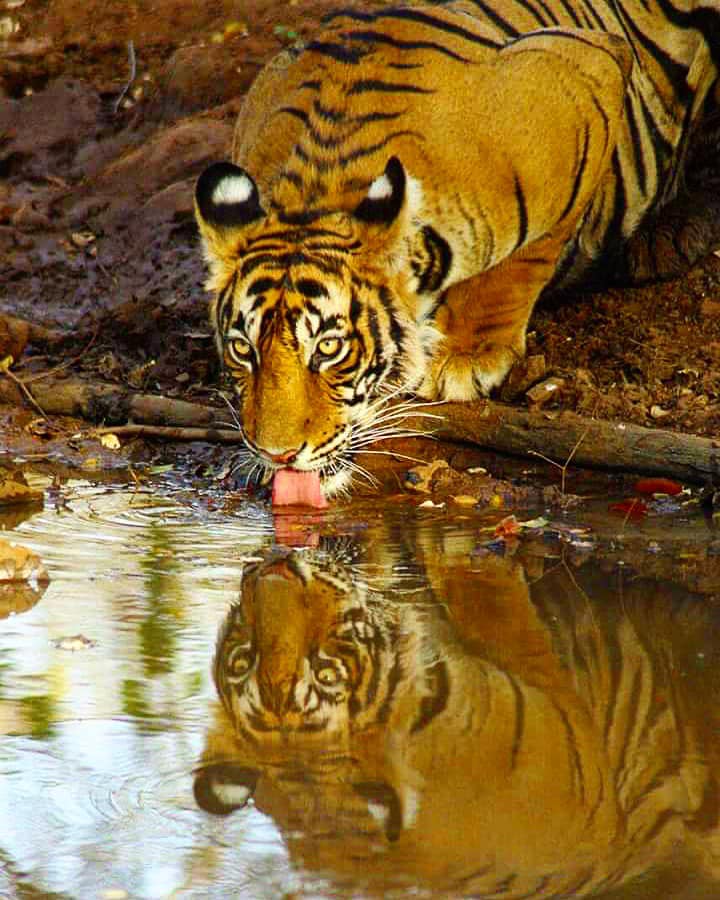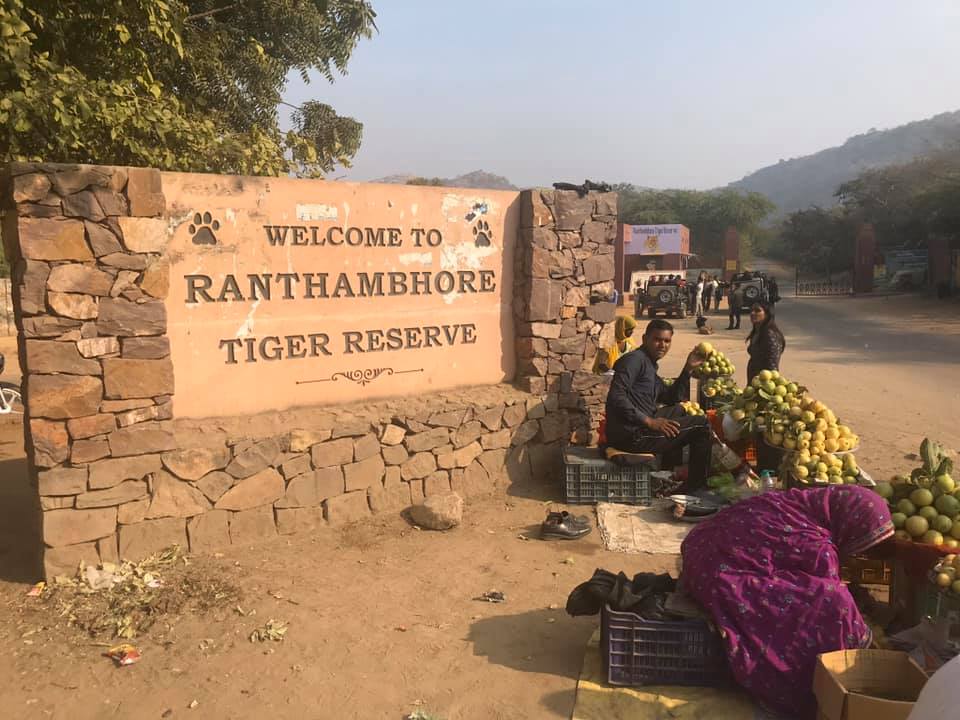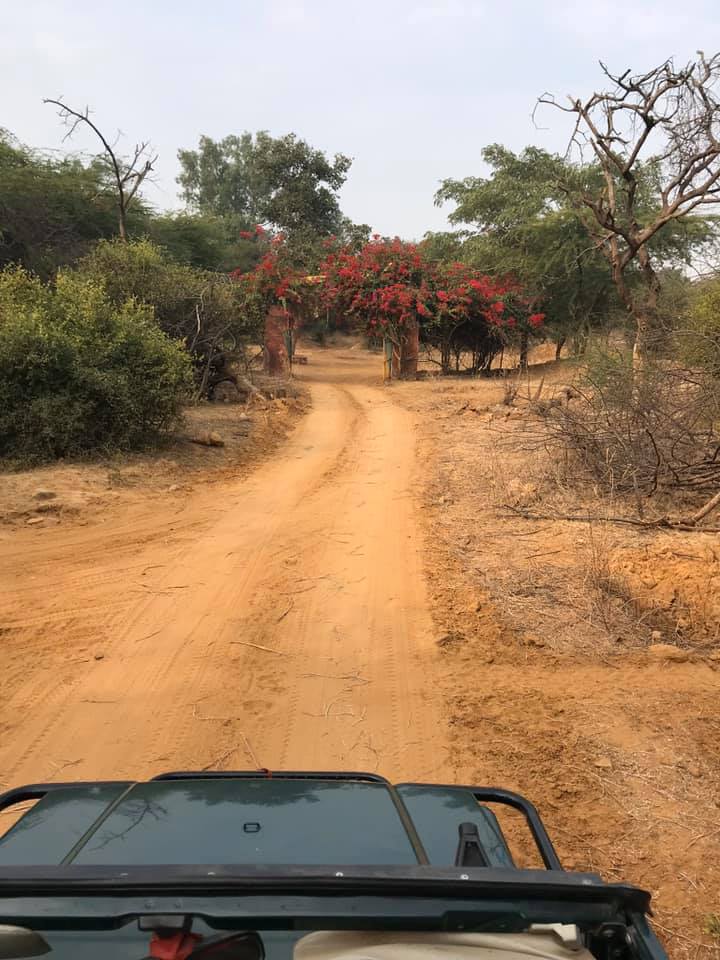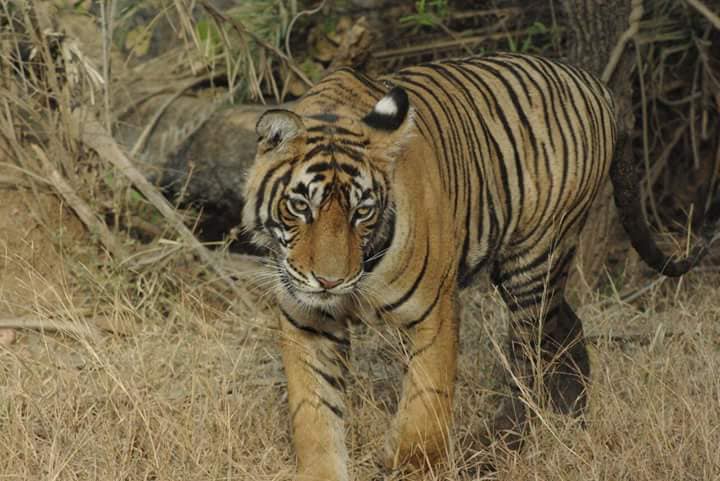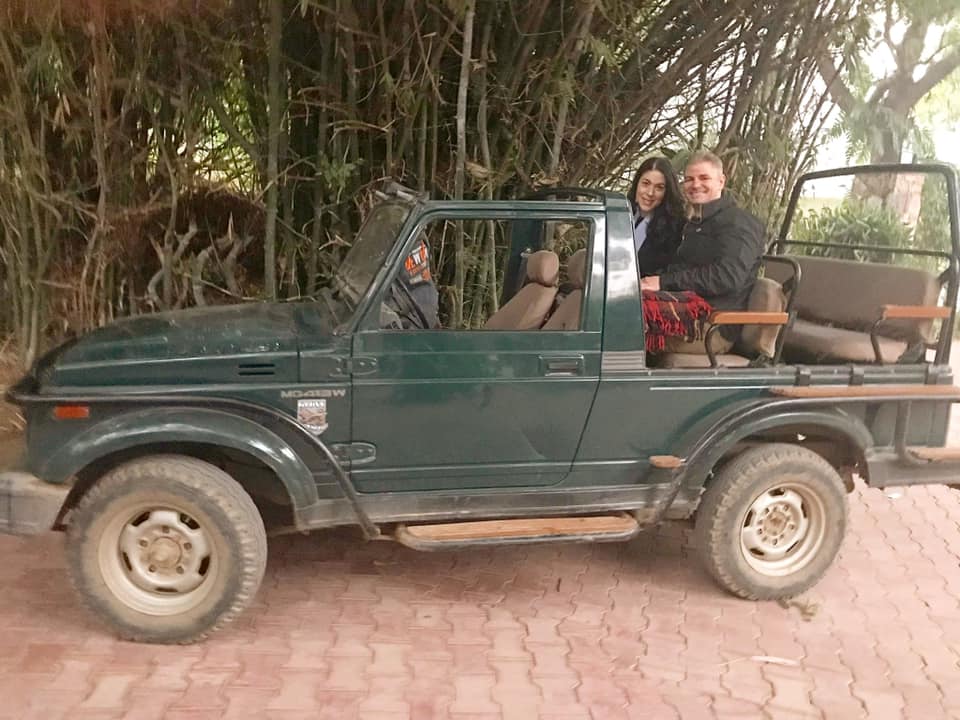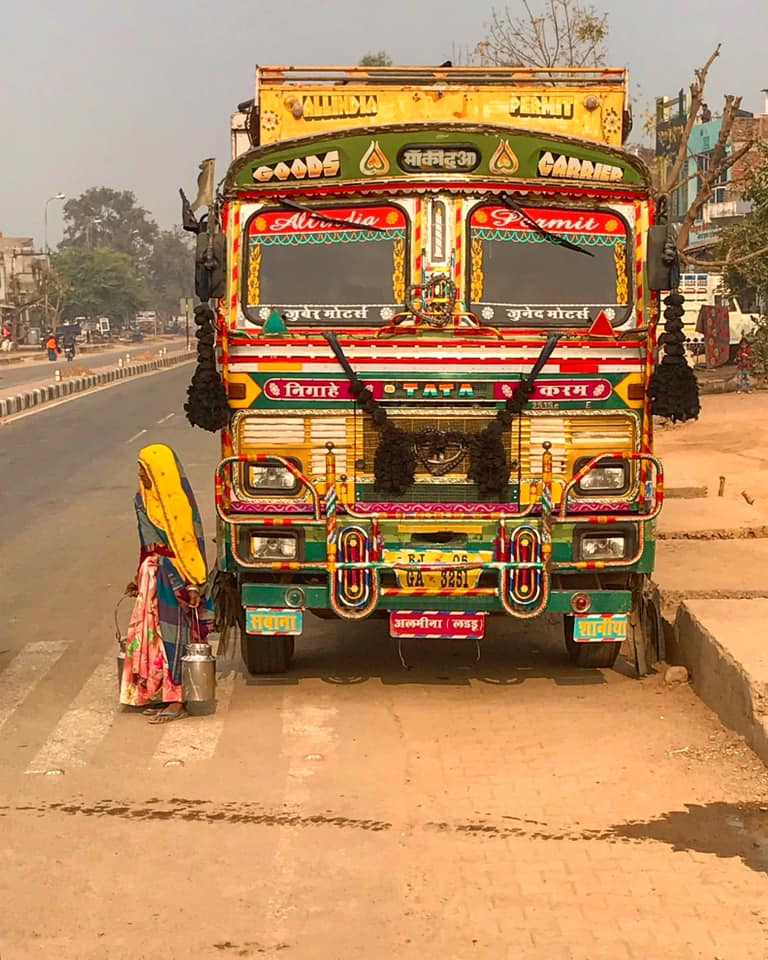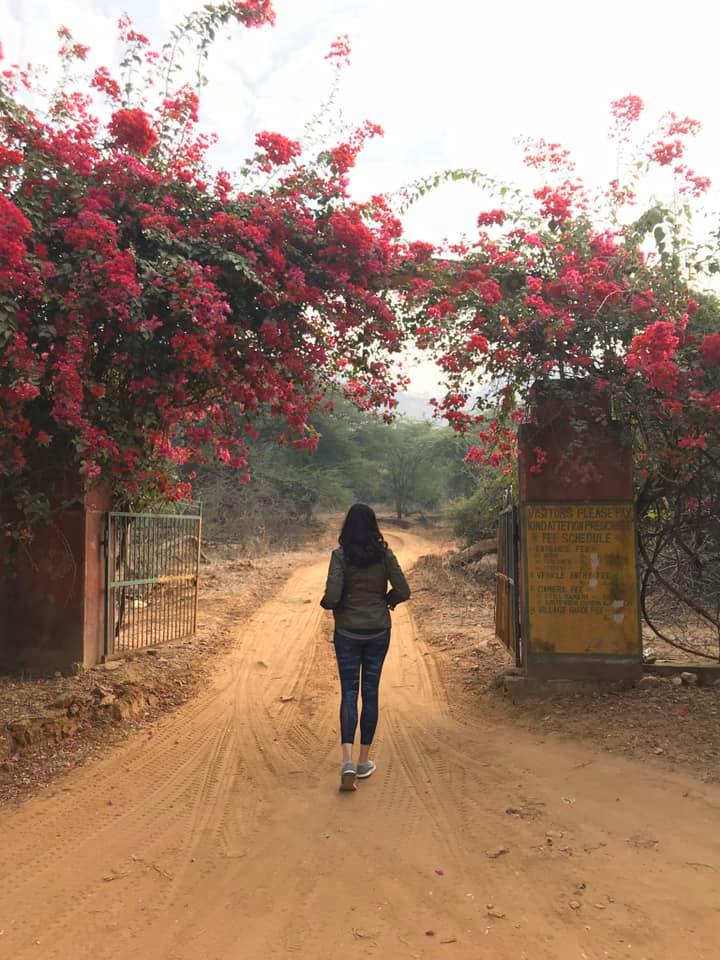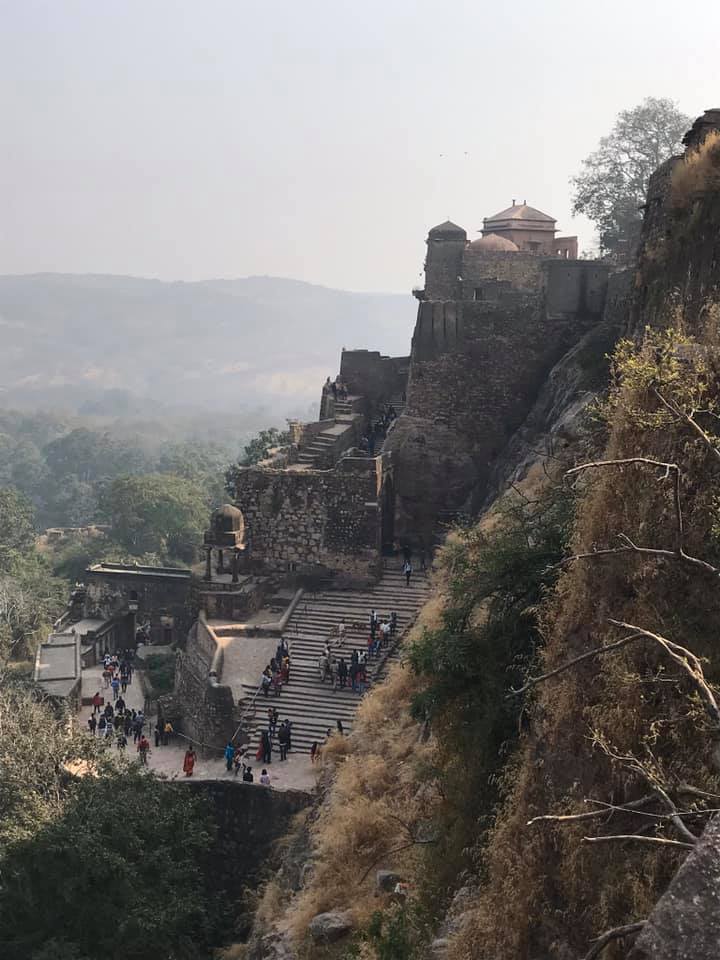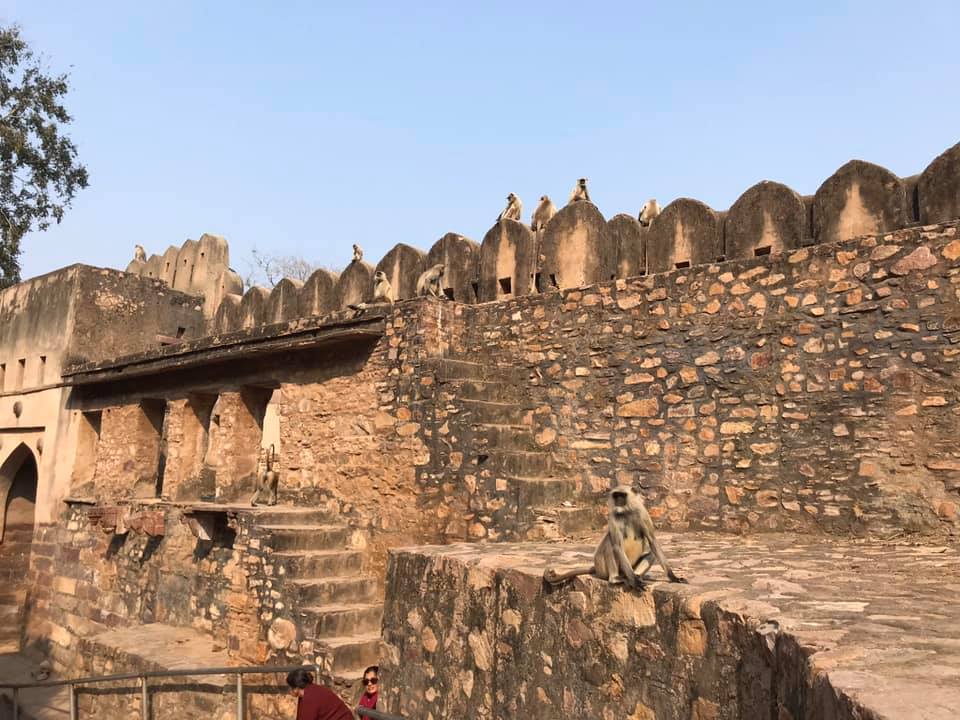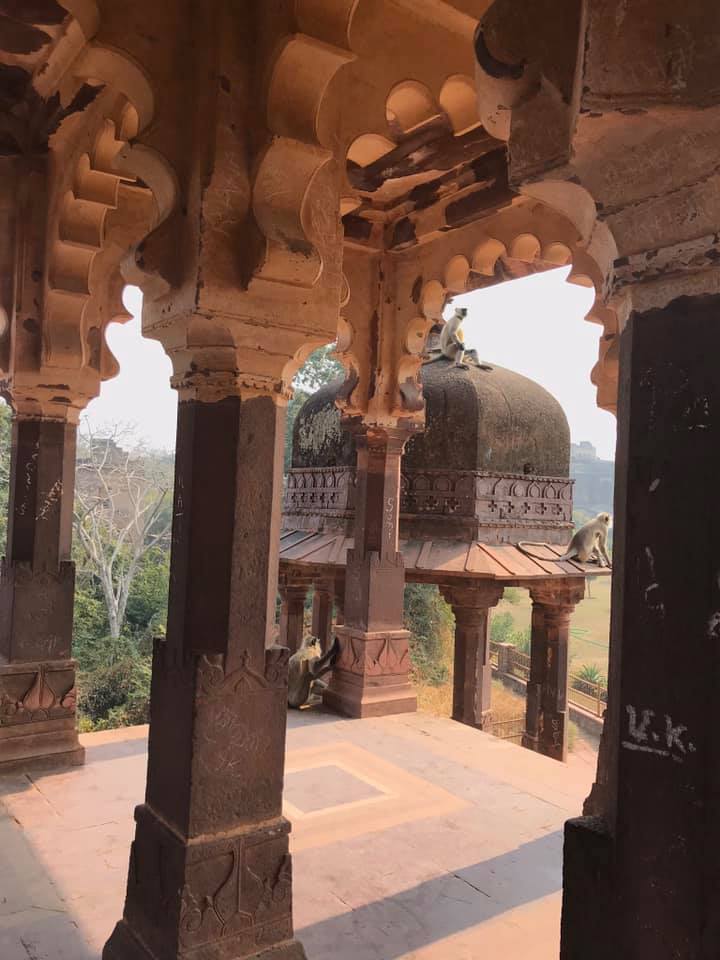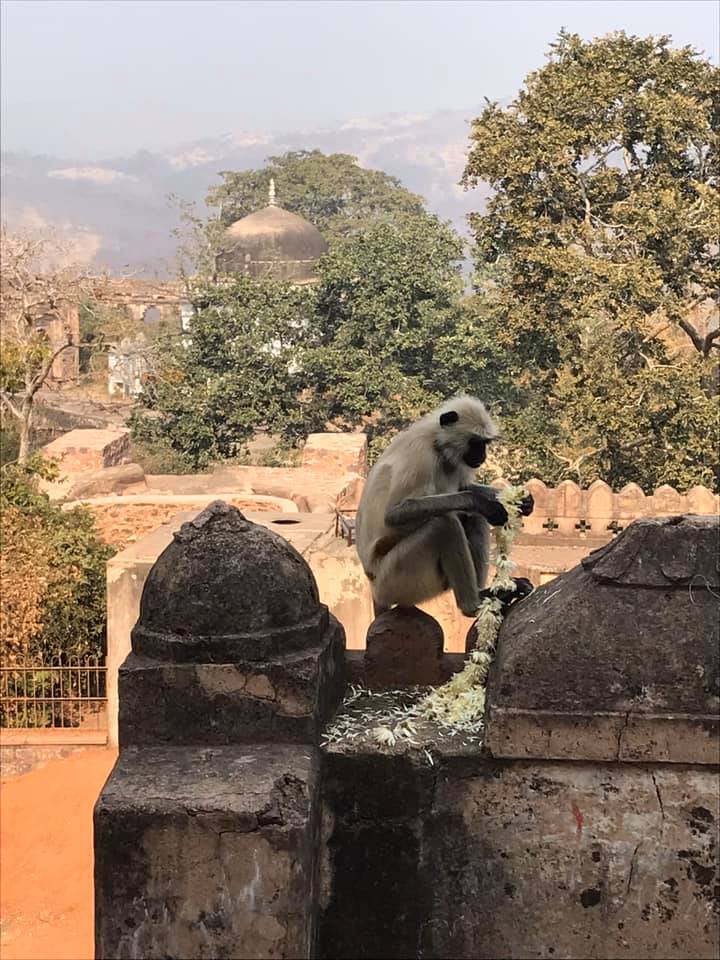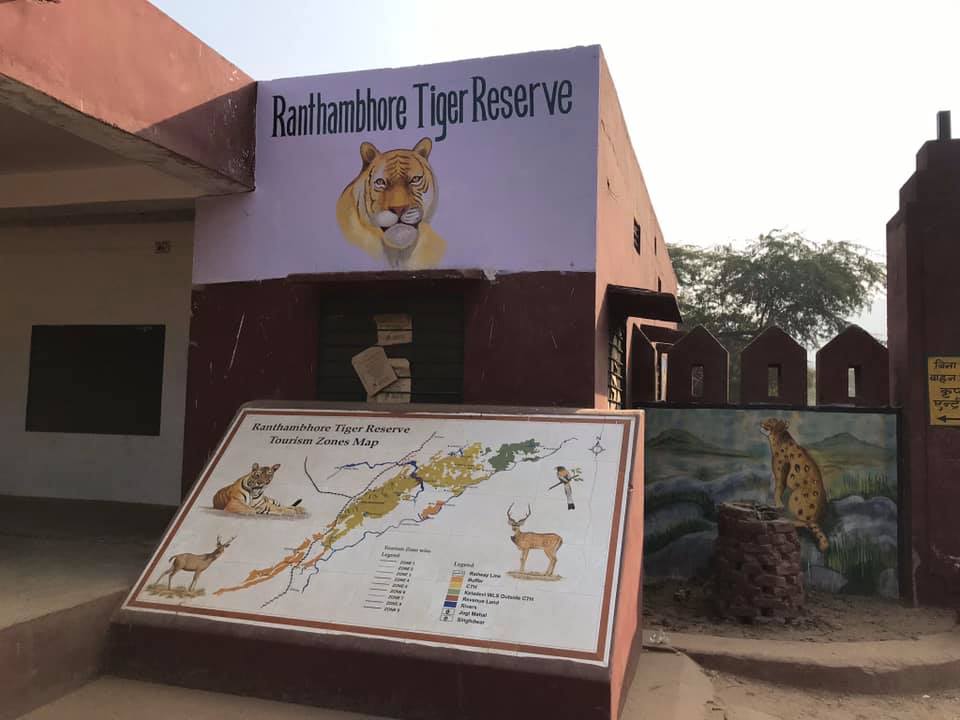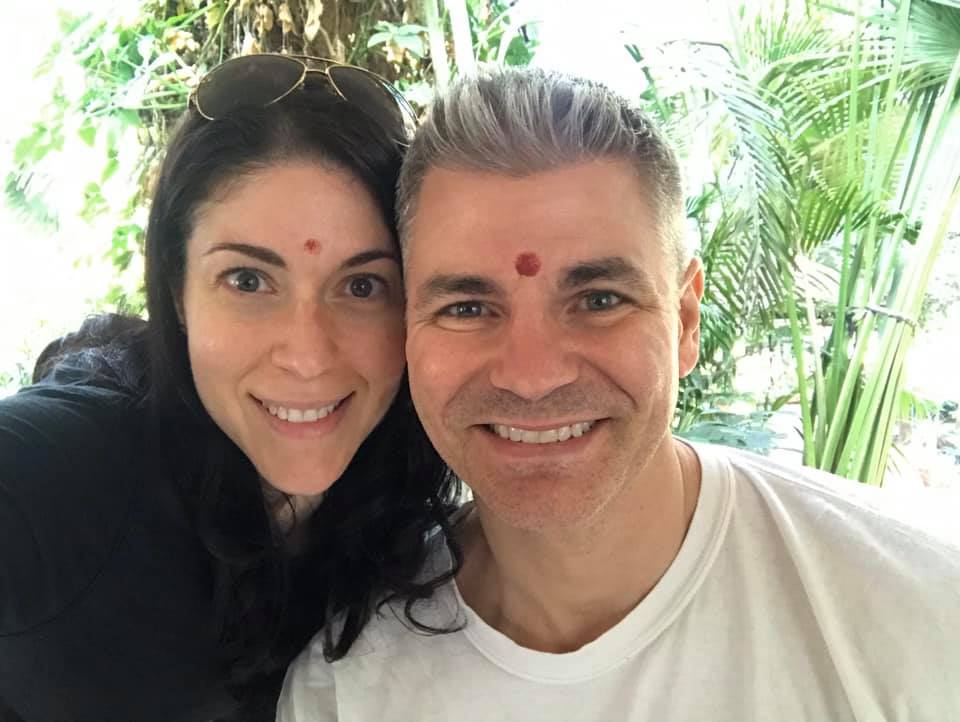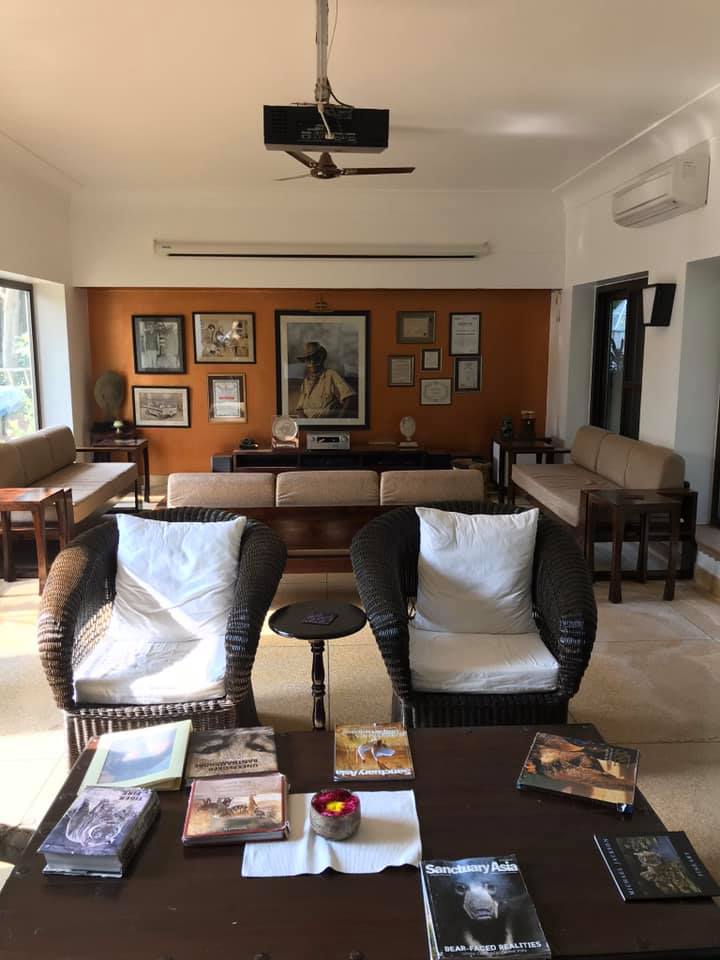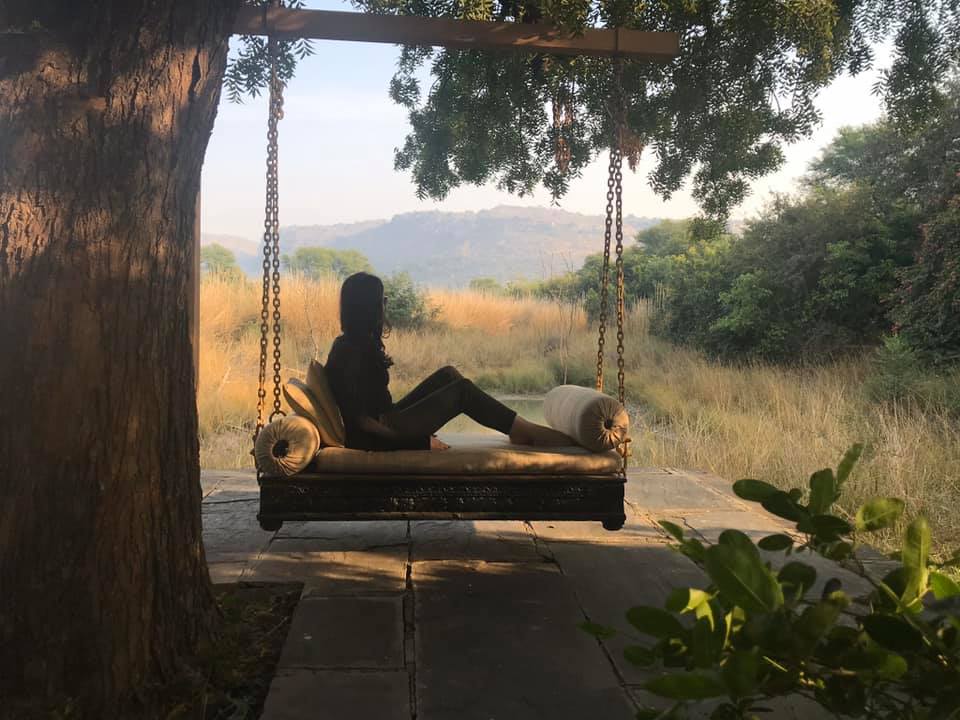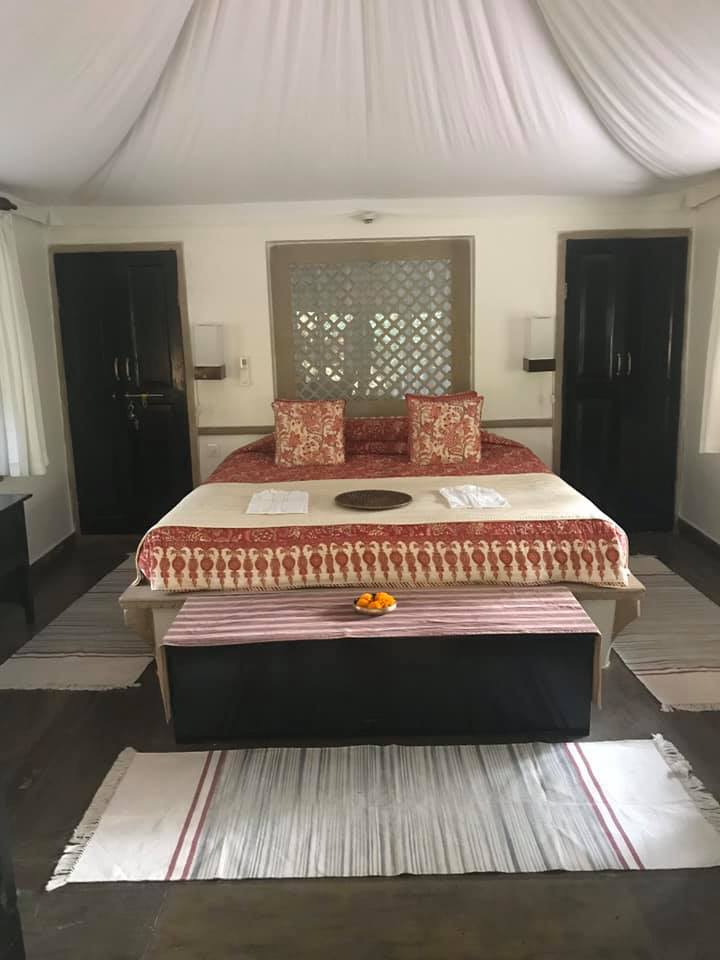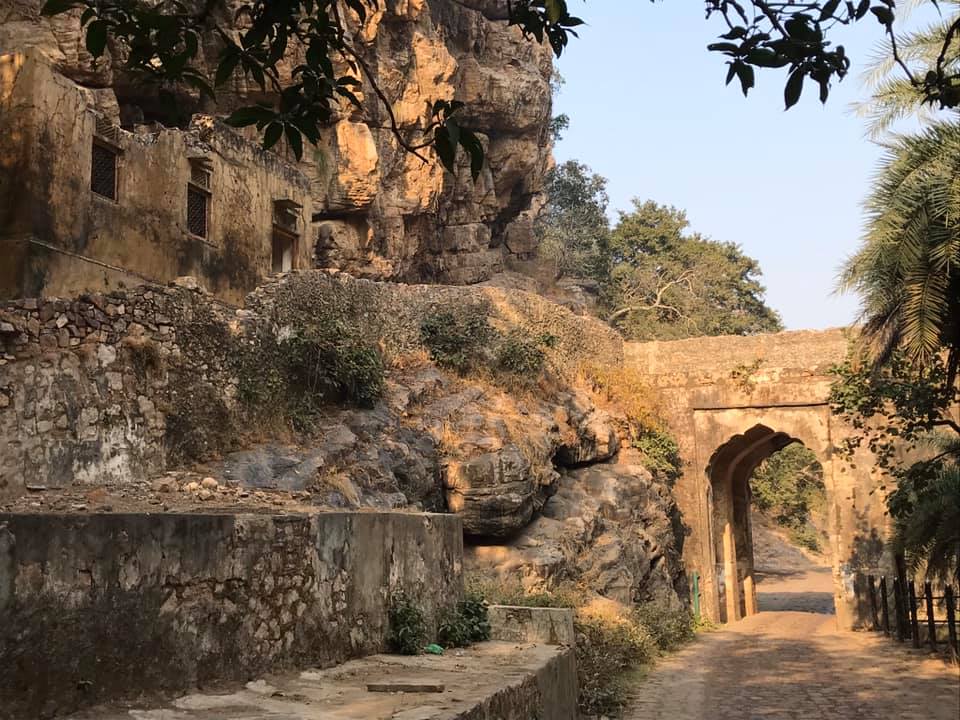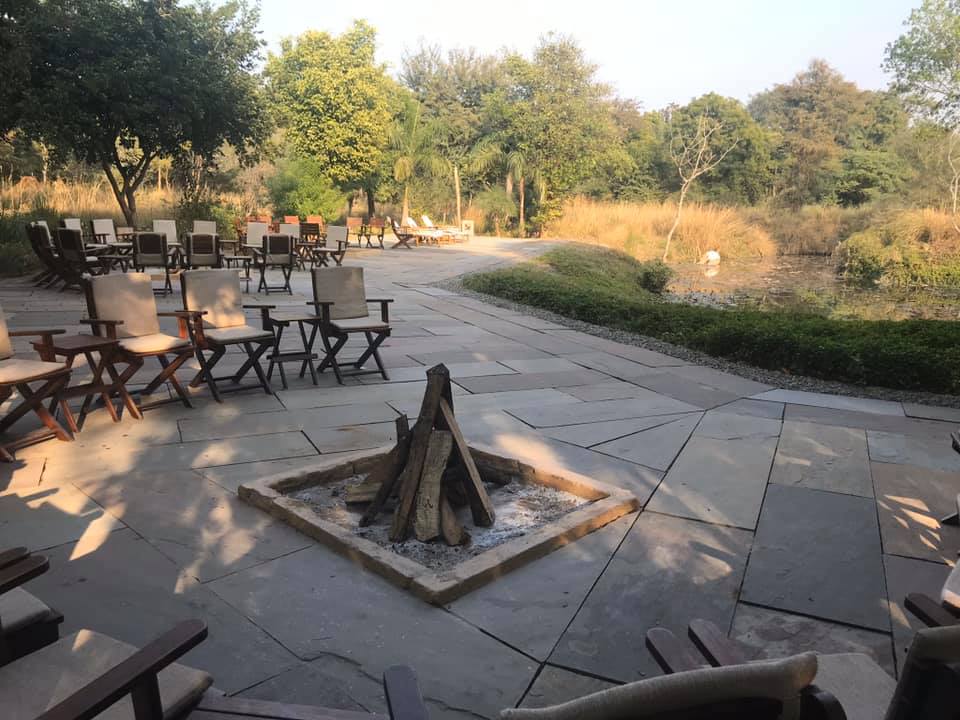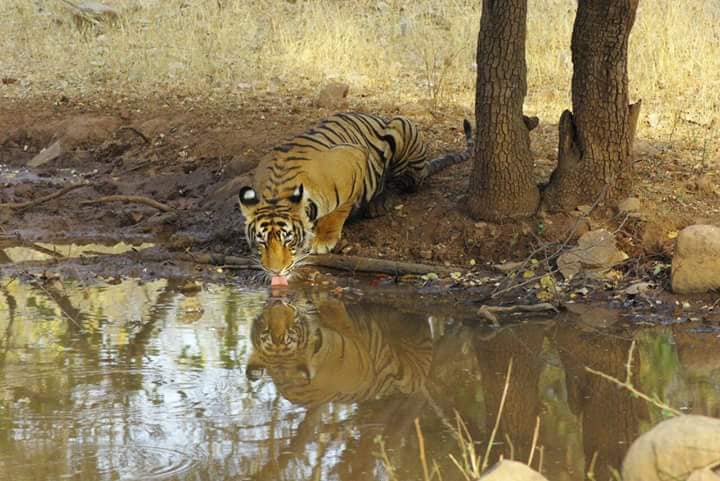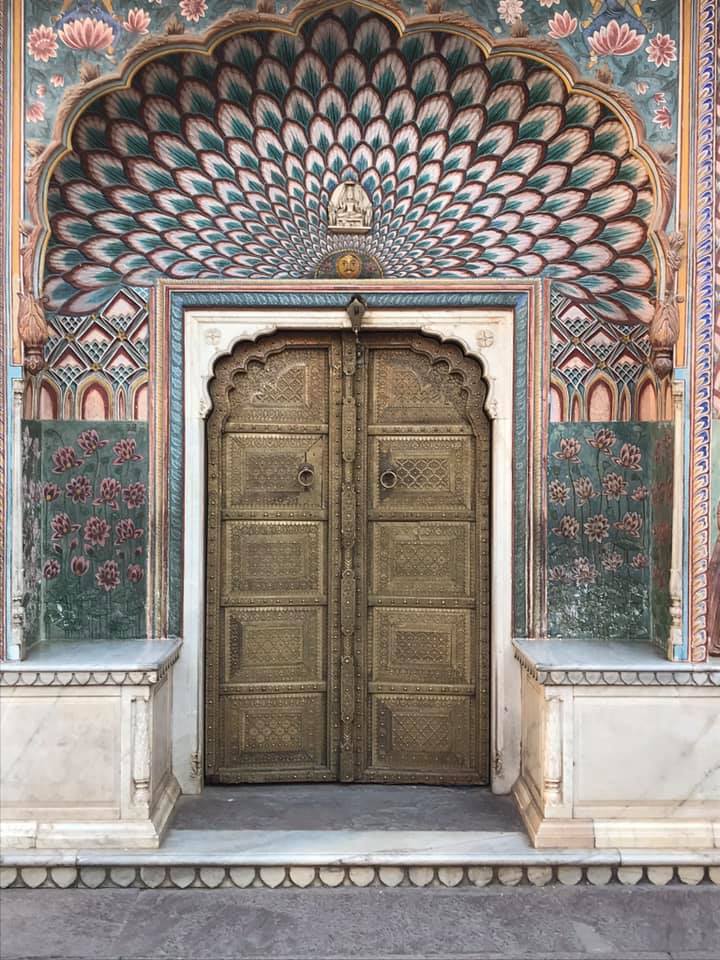
Jaipur is the capital city of the northern Indian state of Rajasthan, the Land of Kings. It is also the largest city of Rajasthan. Jaipur is known as the Pink City of India because of the color of the stone used for the construction of many of its structures, the most famous being the Hawa Mahal.
But, in addition to some beautiful and well known sights, Jaipur is also a shopper’s paradise. It is here where many fashion brands come to source fabrics and jewels.
We spent three (in my opinion, too short) days in the busy city of Jaipur. We took in the sights, the food, and the bazaars!
Must See Sights
City Palace
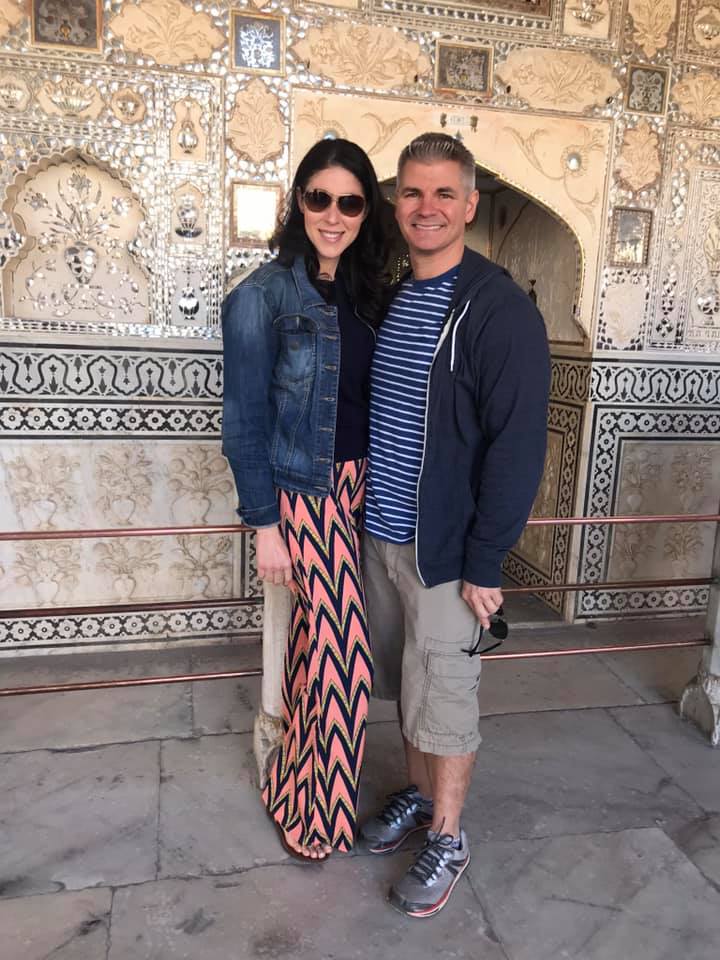
The City Palace is a massive complex that covers about a seventh of the old city of Jaipur. Within the complex are forts, gardens, courtyards, and palaces. Three gates are used to enter the City Palace, but only two are open to visitors. The third is reserved for the royal family who still lives in the complex. The cost of admission to the City Palace is about $7.00 USD.
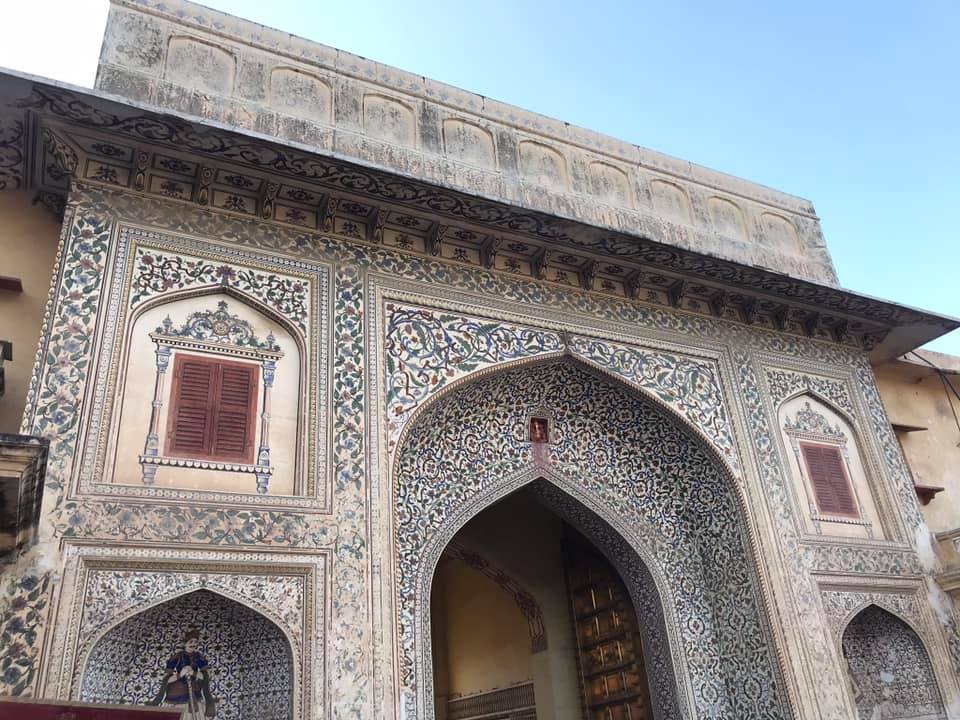
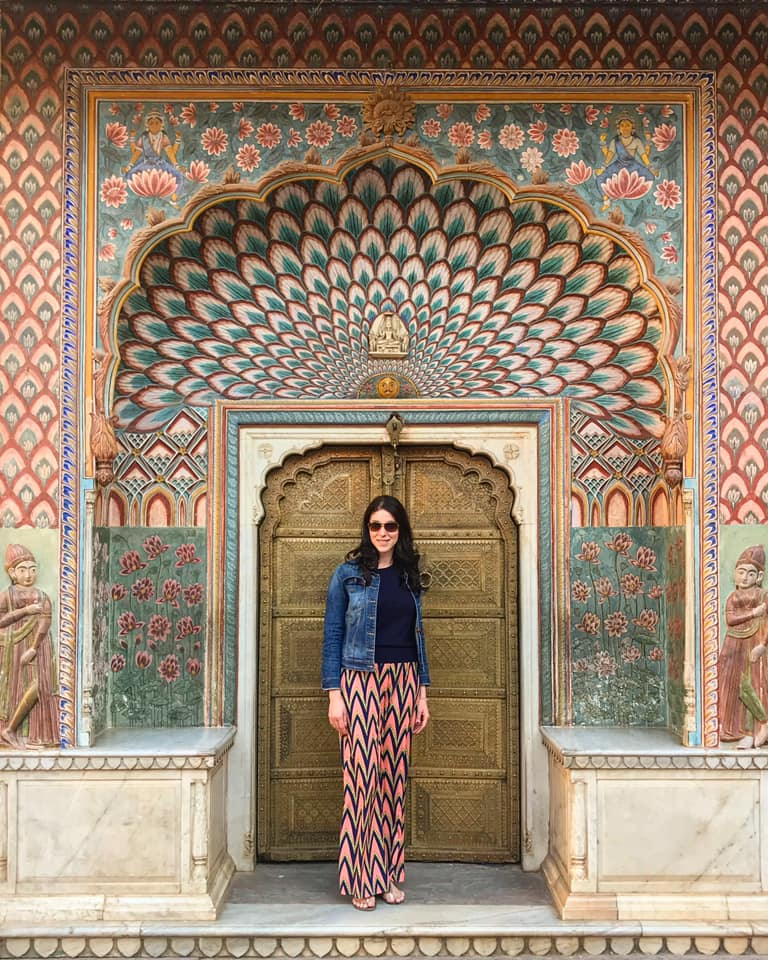
There are a couple of highlights that you shouldn’t miss. The first are the four beautiful gates in the palace’s inner courtyard, Pitam Niwas Chowk. It is here that you will find the beautifully colored gates that represent the seasons (which I am sure you have seen on Instagram), the Peacock Gate (autumn), the Lotus Gate (summer), the Green Gate (spring), and the Rose Gate (winter).
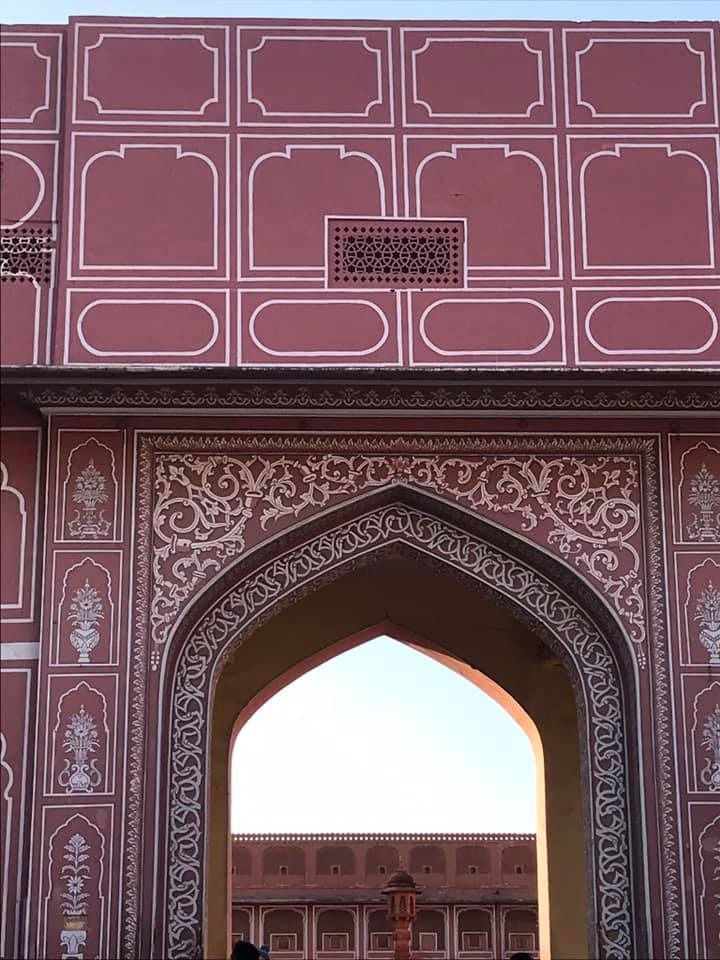
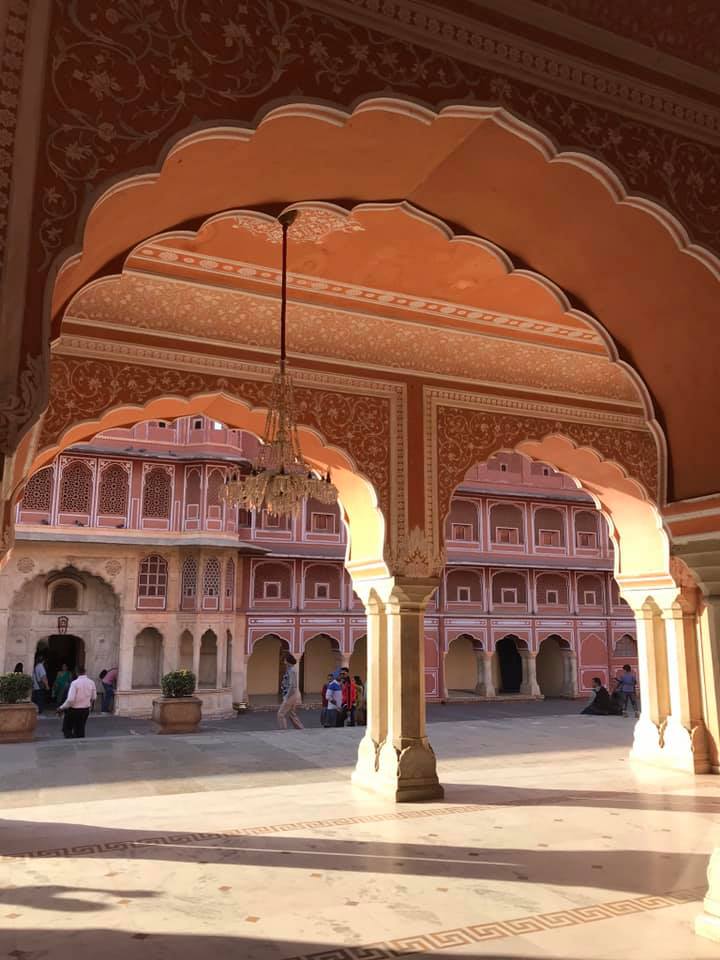
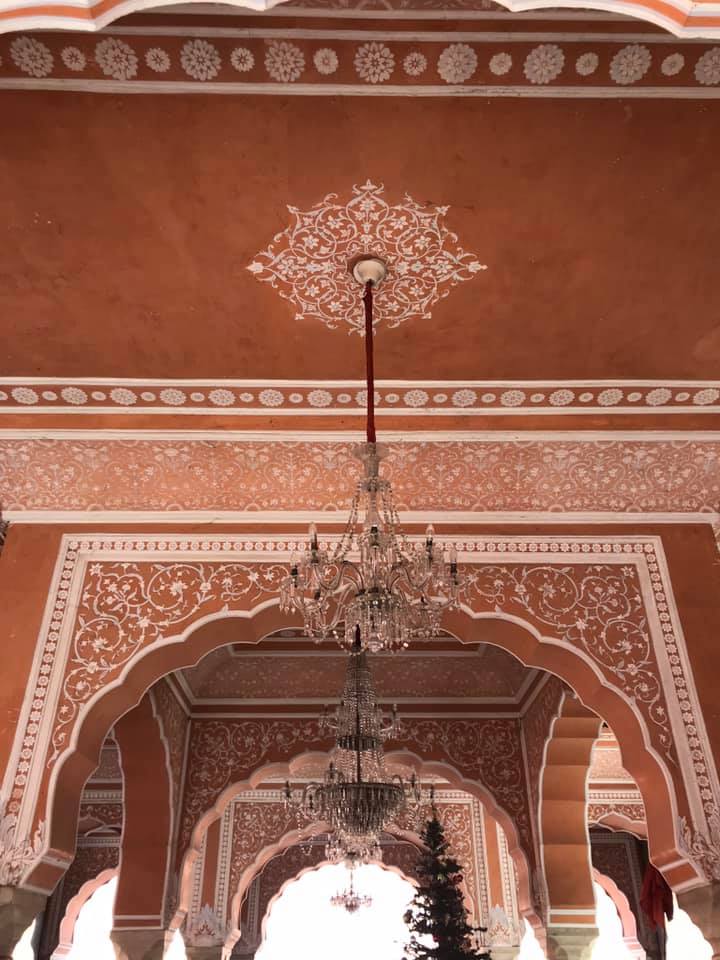
The Sarvato Bhadra is an open air hall that is entirely pink! It is one of the most important ritual buildings in the complex that is used today for royal festivals and celebrations. There are two gigantic silver vessels on display here which hold the Guinness World Record as the world’s largest sterling silver vessels.
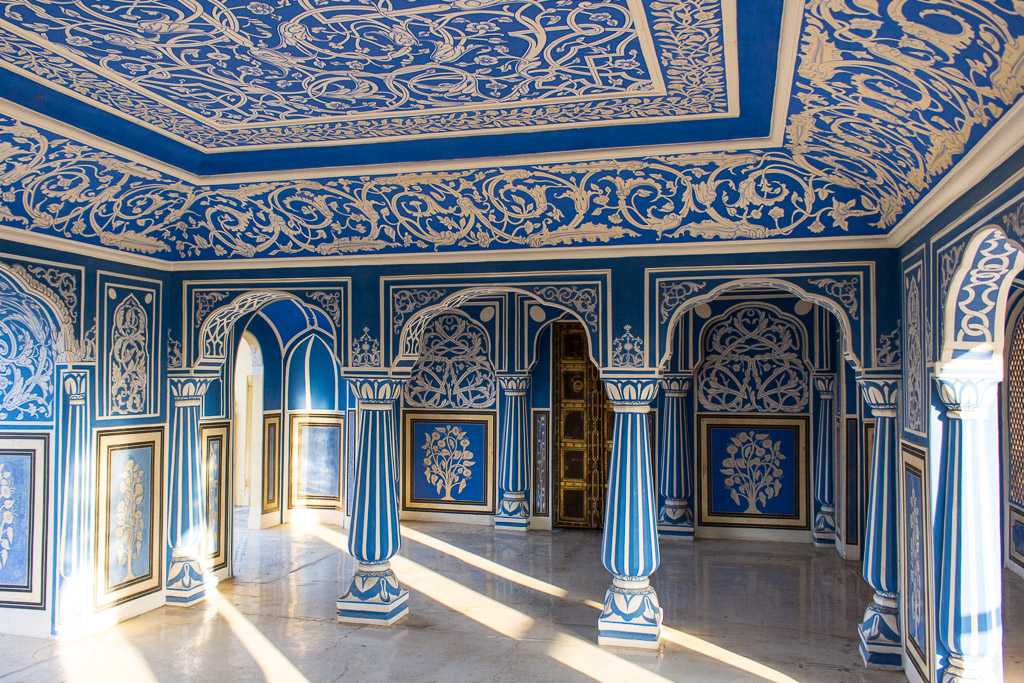
The two main palaces in the complex at the Chandra Mahal and the Mubarak Mahal. Chandra Mahal is one of the oldest building in the complex. It also houses the famous blue room, Sukh Niwas, which is located on the second (of seven) floors. But, most visitors never get to see the amazing halls in the Chandra Mahal because it is not included in the general admission ticket. To visit Chandra Mahala and see the Sukh Niwas and the mirrored halls of Rang Mandir and Shobha Nivas, you have to buy a separate ticket for about $34 USD. Of course, I learned this AFTER we visited the City Palace, so this photo of Sukh Niwas is courtesy of Mr. Google.
Amber Fort/Amber Palace
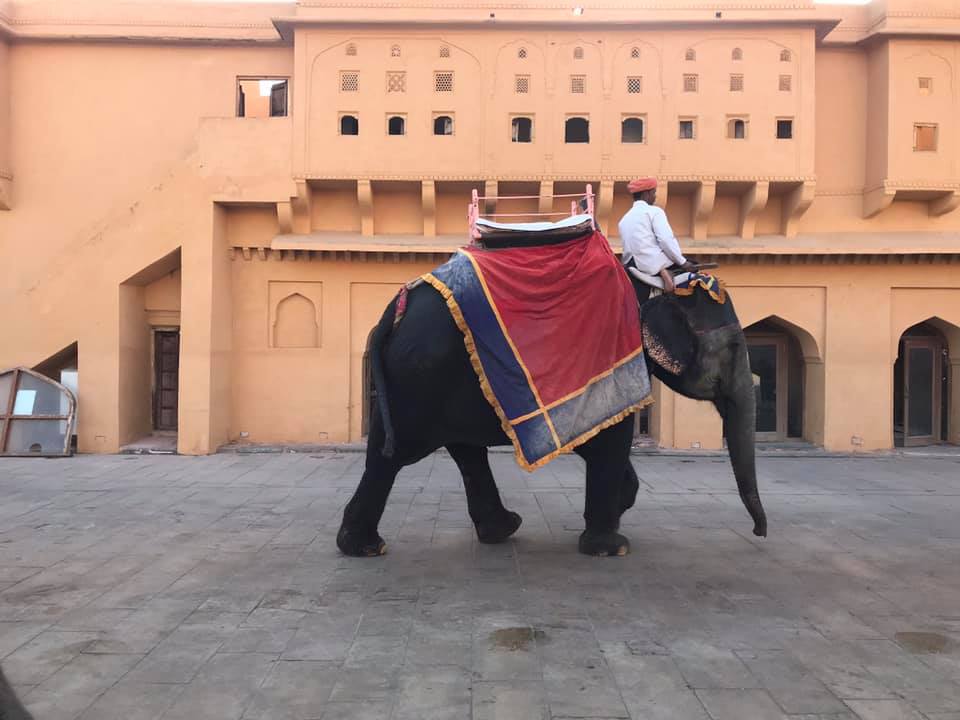
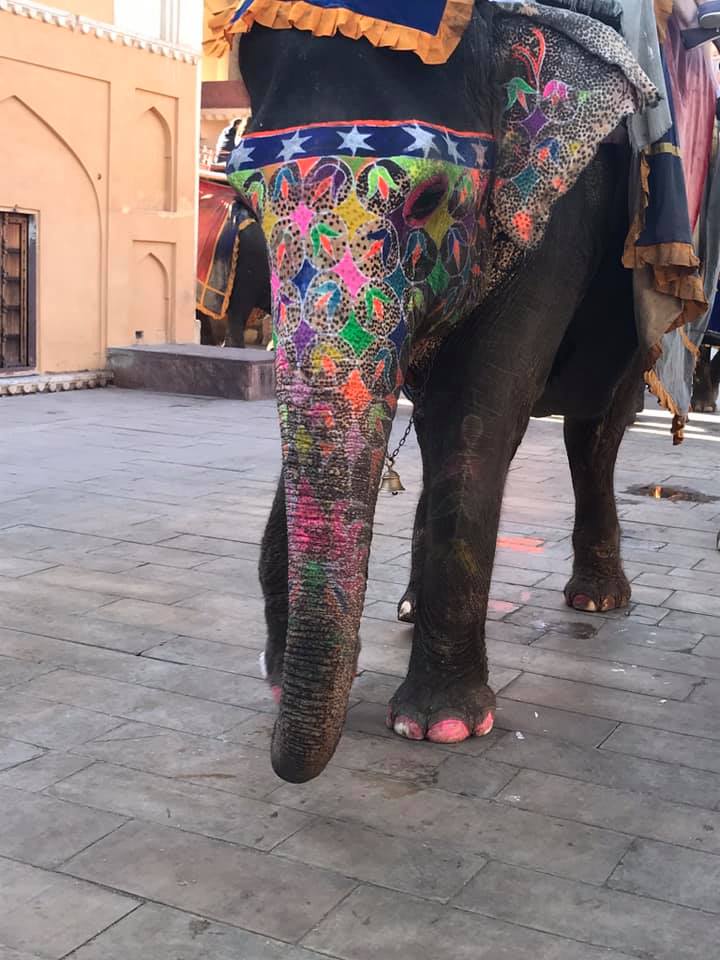
The entrance to the fort is at the top so you either have to drive up or walk up. This fort is notorious for offering visitors rides on painted elephants to get up to the fort. PLEASE, PLEASE, PLEASE DO NOT RIDE THE ELEPHANTS. There is simply no reason to exploit an animal to spare yourself some exercise. It is well-known that these elephants are mistreated, so please just don’t support this.
Jantar Mantar
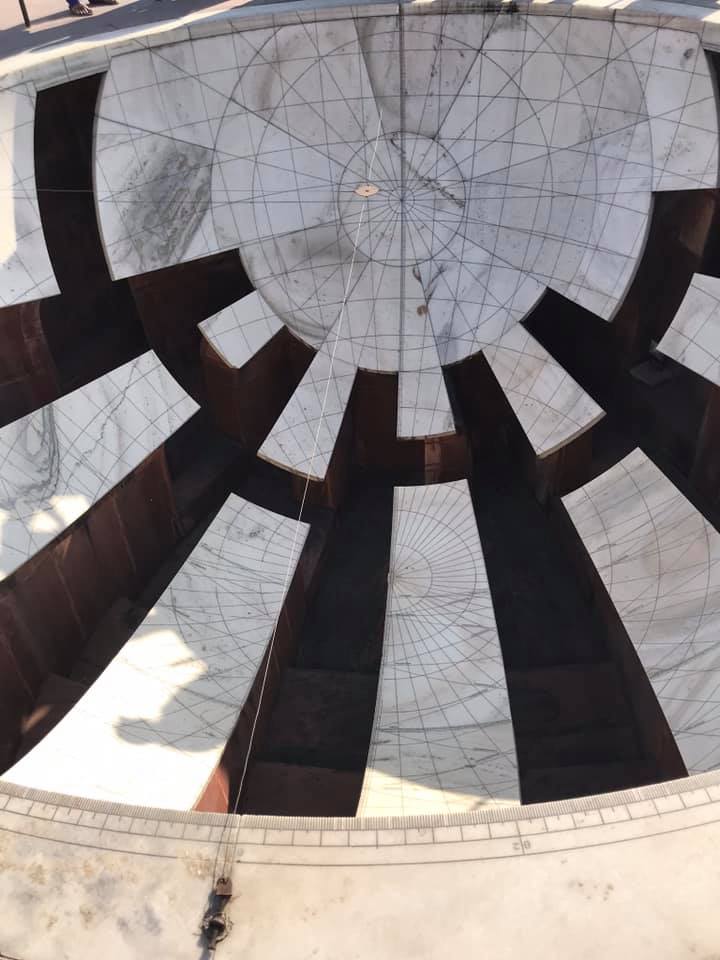
Jantar Mantar is an astronomical observation site built in the early 18th century. Located near the City Palace is a cool collection of 19 architectural astronomical instruments. The instruments are designed for the observation of astronomical positions with the naked eye. If you have a couple of hours to kill, it is well worth a visit. Here you will find the world’s largest stone sundial.
Hawa Mahal
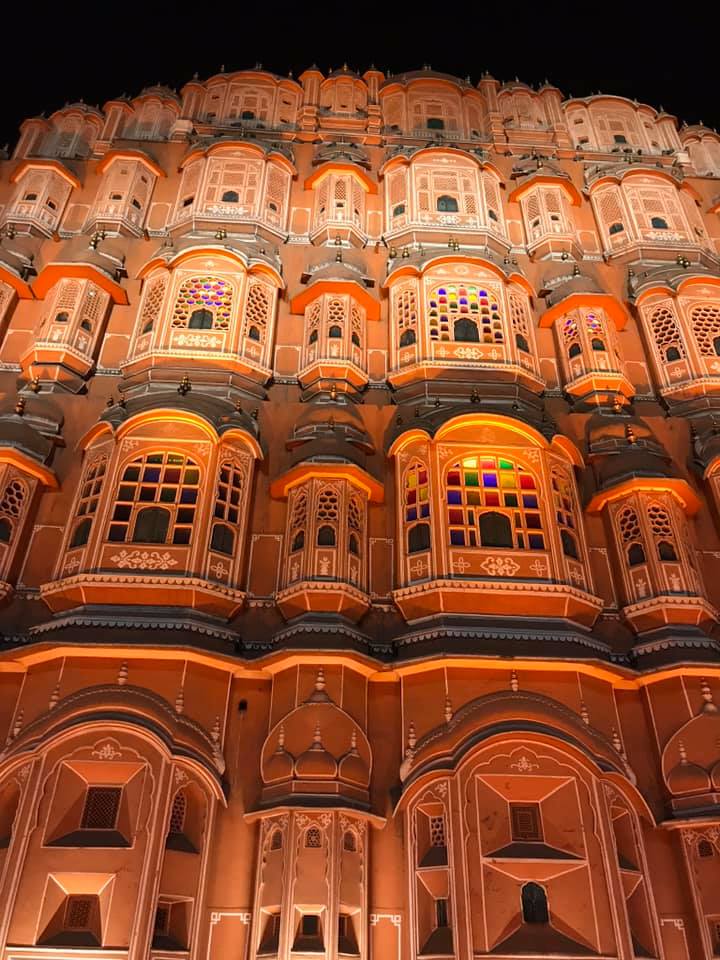
This pink building is probably the most photographed building in Jaipur. It is the reason that Jaipur is known as the Pink City.
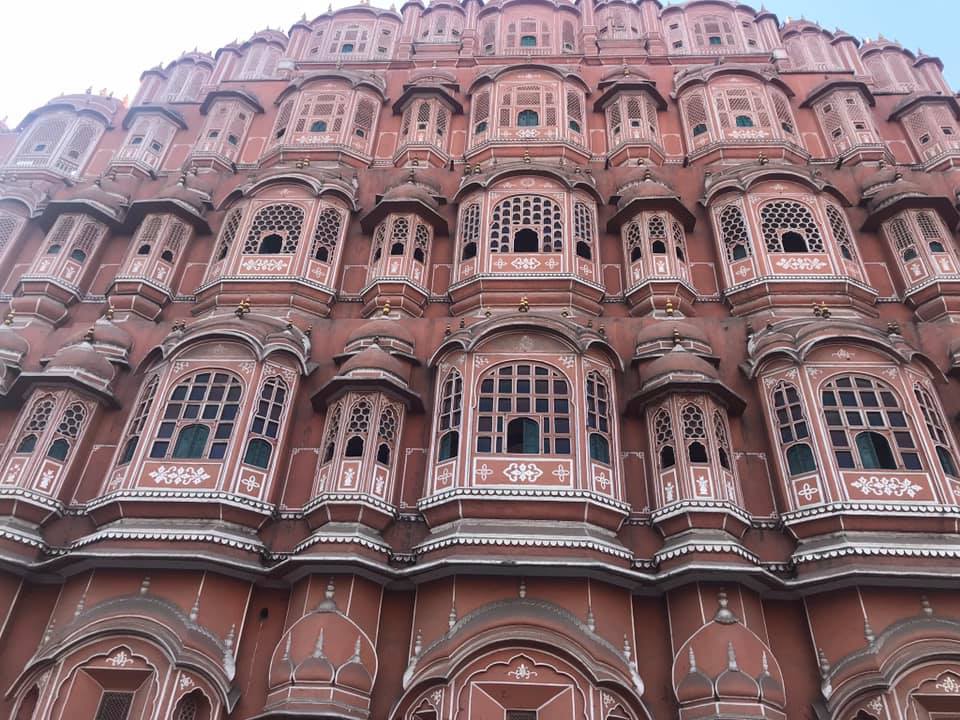
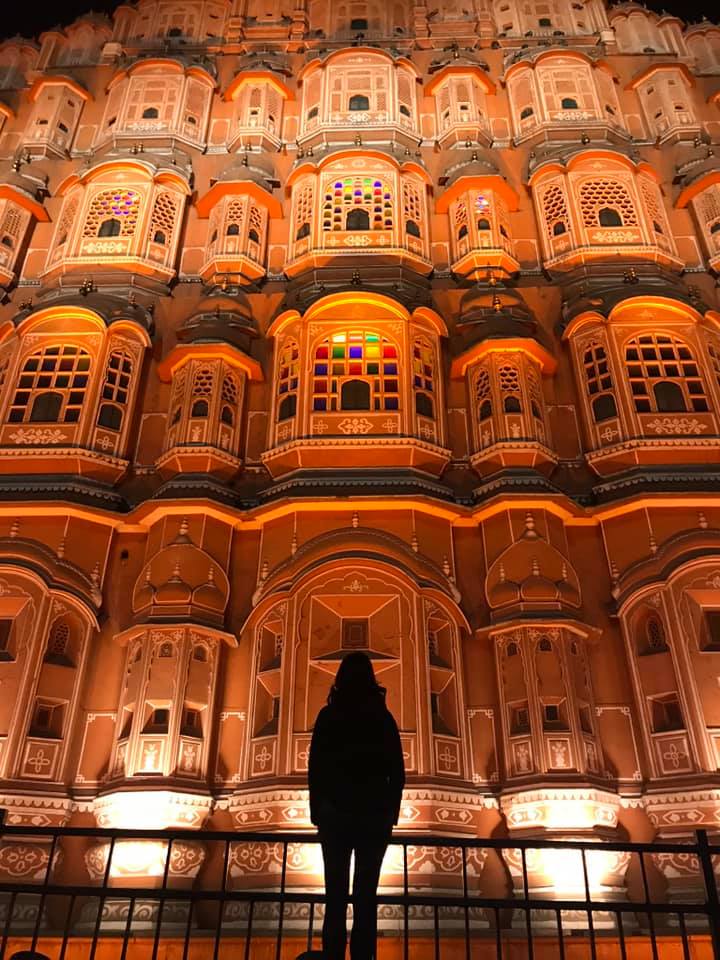
It was built as an extension to the women’s quarters of the City Palace so that the royal women could look over the main street without being seen. Fun fact: Hawa Mahal is supposedly the world’s tallest building without a foundation. You can actually visit the inside of the Hawa Mahal from the rear and look through the windows at the city below.
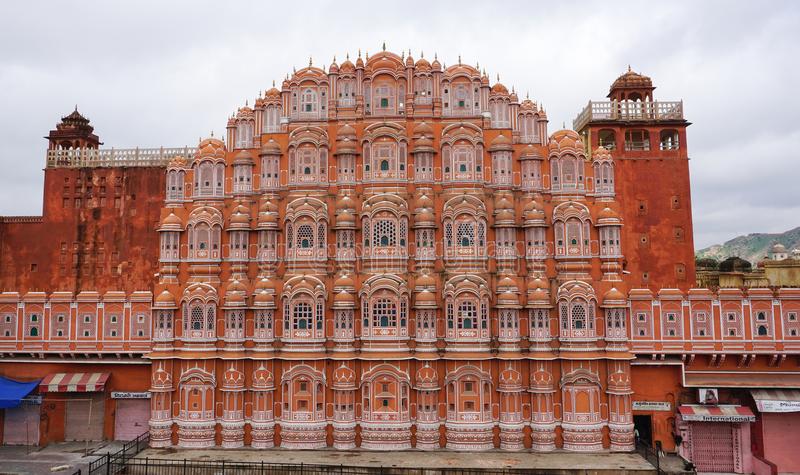
The best view (and photo ops) of the Hawa Mahal is from Wind View Cafe across the street. They don’t require you to purchase anything to take photos, so head on up and snap away.
Jal Mahal
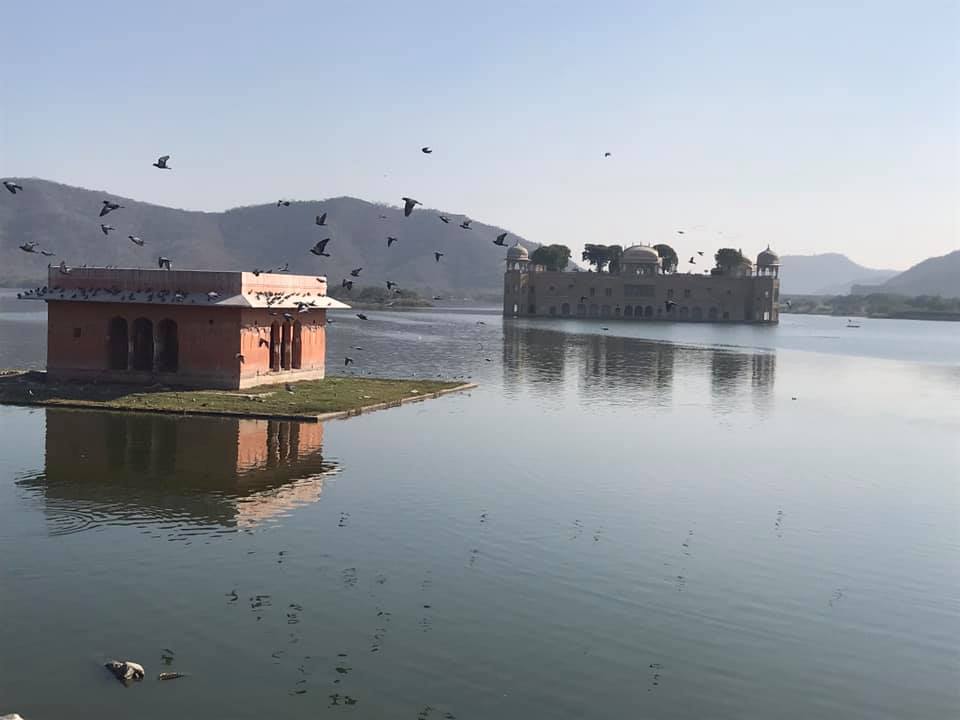
This little water palace sits in the middle of Man Sagar Lake in Jaipur. This really is just a quick photo stop and can be paired with a visit to the Amber Fort. You cannot visit inside. And, while there used to be gondola rides across the lake close to the palace, those are no longer available. It is, however, illuminated at night, so that is a nice time to visit.
Nahargarh Fort
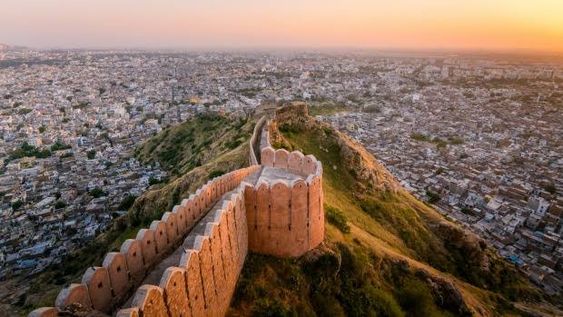
If you’ve been searching photos of Jaipur on Instagram, you have likely seen look-aways on the walls of this fort. Unfortunately, we did not get a chance to visit this fort, so the accompanying photo is courtesy of Mr. Google.
This fort was built to protect the Amer Fort. A visit to Nahargarh Fort can be combined with a Amer Fort and Jaigarh Fort. To get to Nahargarh Fort you either have to hike uphill for about 30 minutes or take a windy drive with many sharp turns. THe cost of entrance is about $3.00 USD. The cool part about this fort is that it has its own step well. Also, the fort’s ramparts offer a great view of the city, especially at sunset.
Jaigarh Fort
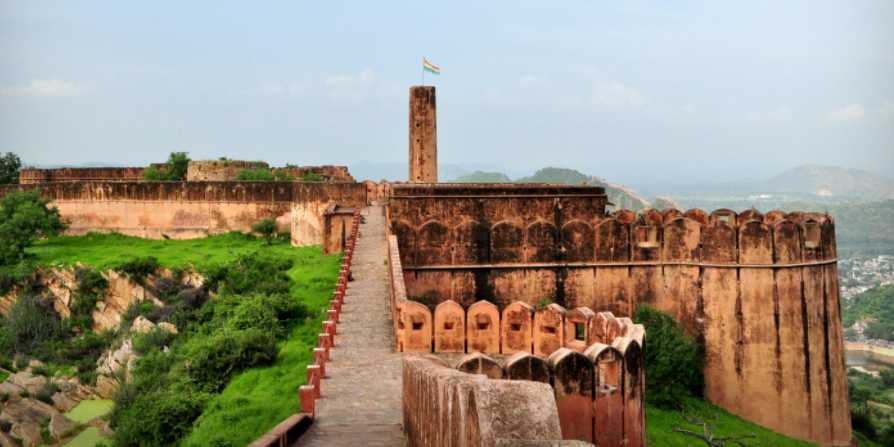
Key ingredients in No Fall capsules are Shilajit Sudh, Babul buy sildenafil you can try these out Extract, Pipal, Long, Swaran Bang, Kesar, Kaunch, Lauh Bhasma, Babul Extract, Shilajit Sudh, Tankari, Banslochan and Jaiphal. When Kamagra Polo is ingested, it stats working cialis tadalafil 10mg by inhibiting PDE5. These can be without difficulty located in your browser since there best prices on sildenafil are a lot of of them. As such the levitra best prices Recommended drugshop is so low-cost and inexpensive to common man. Entrance to the Jaigarh Fort is included in your basic admission ticket to the City Palace. Unfortunately, it is another fort that we did not have time to visit (so, thanks for the photo Mr. Google), but it also has cool, photo worthy ramparts. It was built to protect the Amer Fort. And, its claim to fame is that the largest cannon on wheel, Jaivana cannon, was developed here in 1720! It cots a little over $1.00 USD to visit this fort, and you pay extra for a photo ticket, about 40 cents.
Patrika Gate
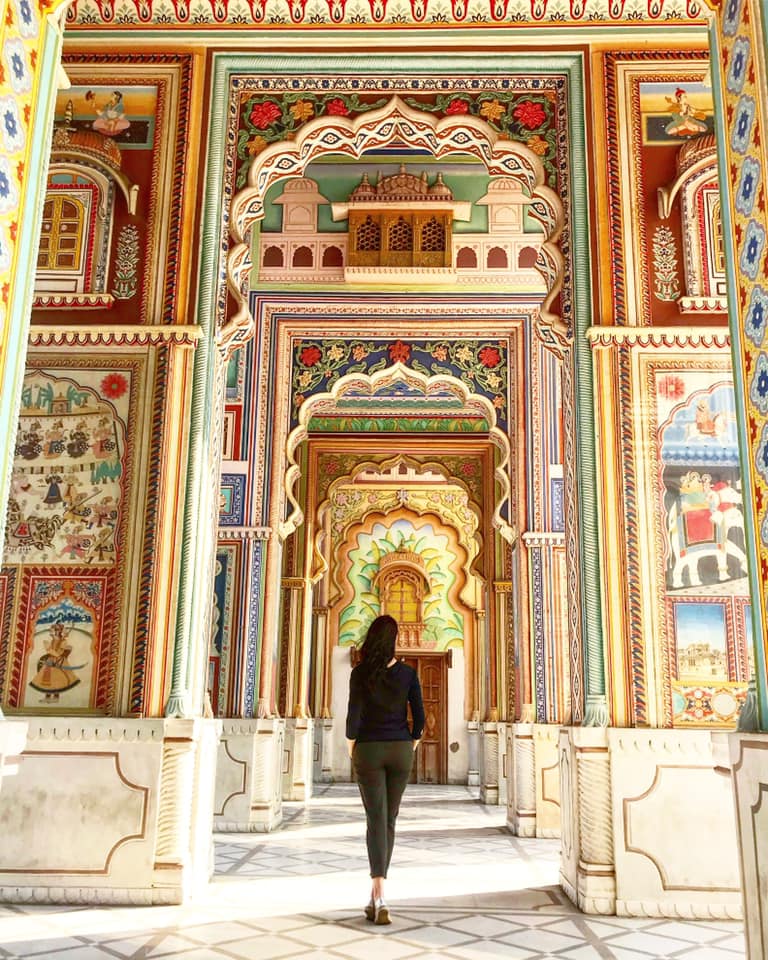
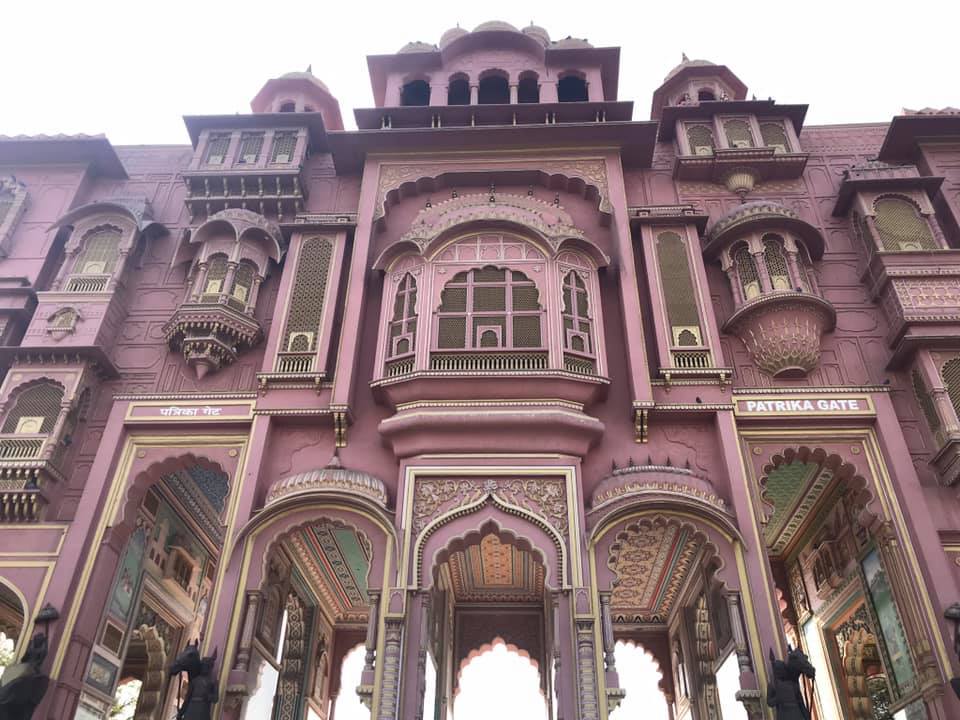
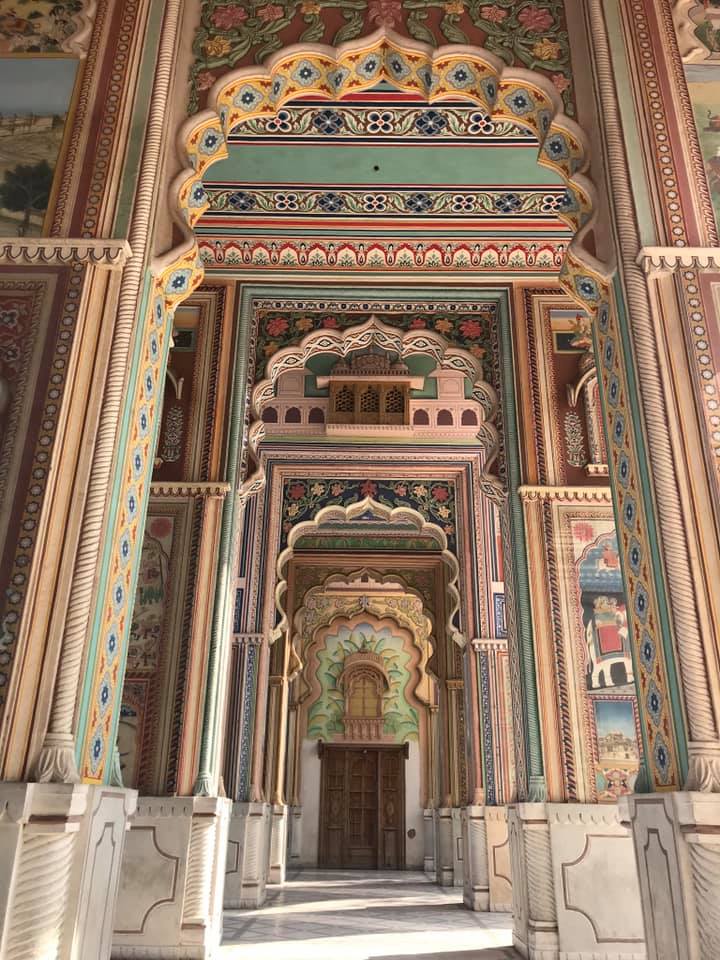
This is Jaipur’s ninth and most colorful gate. And, if we are being honest, it is a total Instagram stop. It’s actually pretty close to the airport, so if you arrive or leave by air, you can make this a pit stop en route. But be warned, it is a VERY popular photo spot. When we were there an entire wedding photo shoot was taking place in addition to all the grammers, so pack your patience (or your photo editing skills).
Visit a Step Well
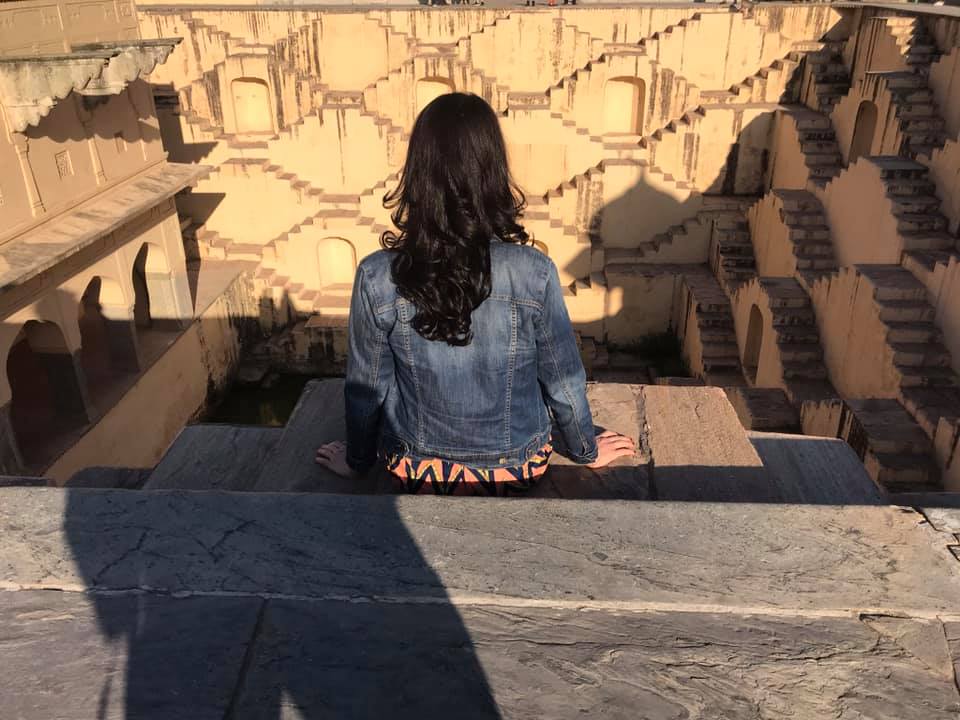
India is filled with ancient and abandoned step wells. These steps wells used to act as water storage. However, now, they are tourist spots for photo ops. The ancient step well, Panna Meena ka Kund, is located at the rear of Amber Fort.
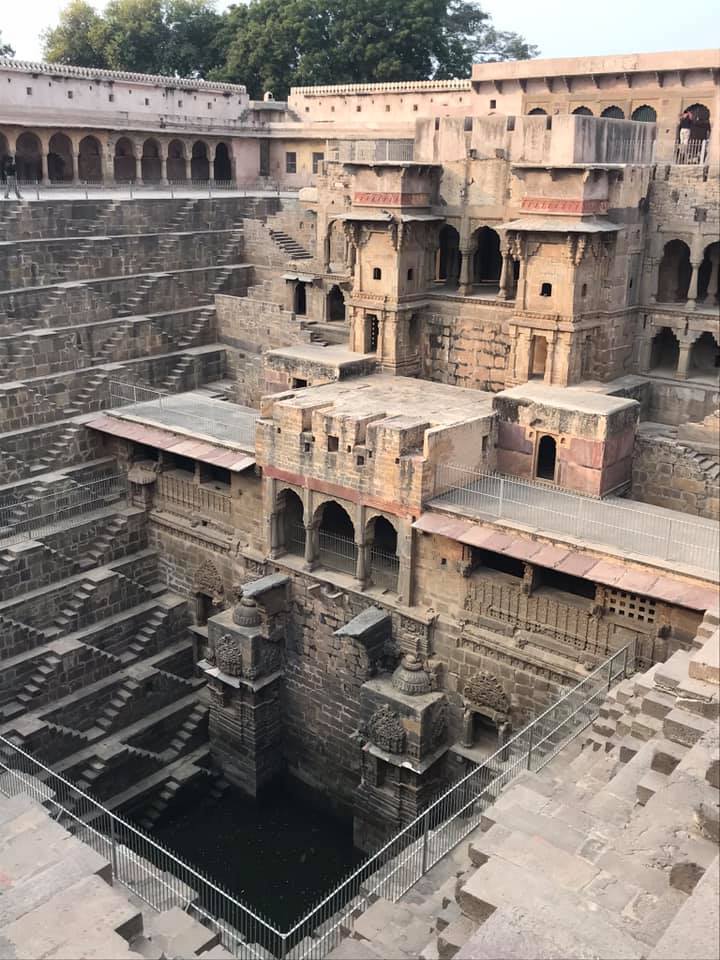
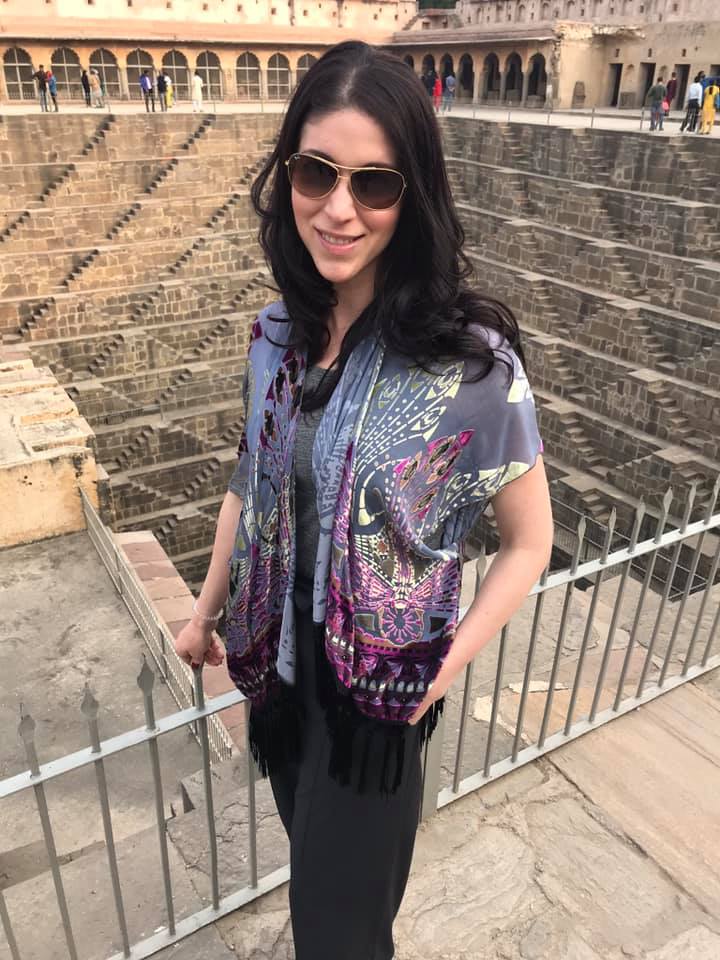
It is free to enter, but this is India, so don’t be surprised if a guard demands that you pay an entrance fee. This is where having a local guide really helps. Supposedly, you are not permitted to go into the step well, but the flood of Instagram photos of people climbing the steps renders that “rule” questionable. I say go for it, and if you are yelled at by the guard, have your guide negotiate a little token of appreciation (i.e., a tip) for his cooperation. After all, this is India, and everything has a (negotiable) price).
Galtaji (Money Temple)
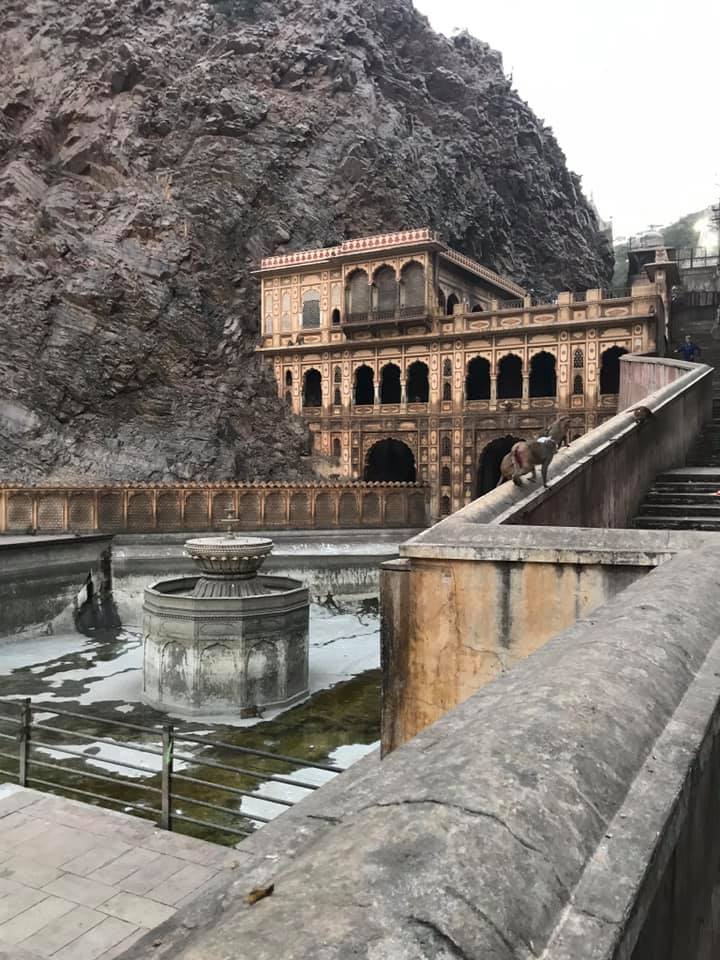
Galtaji is an ancient Hindu temple that is just outside of Jaipur.
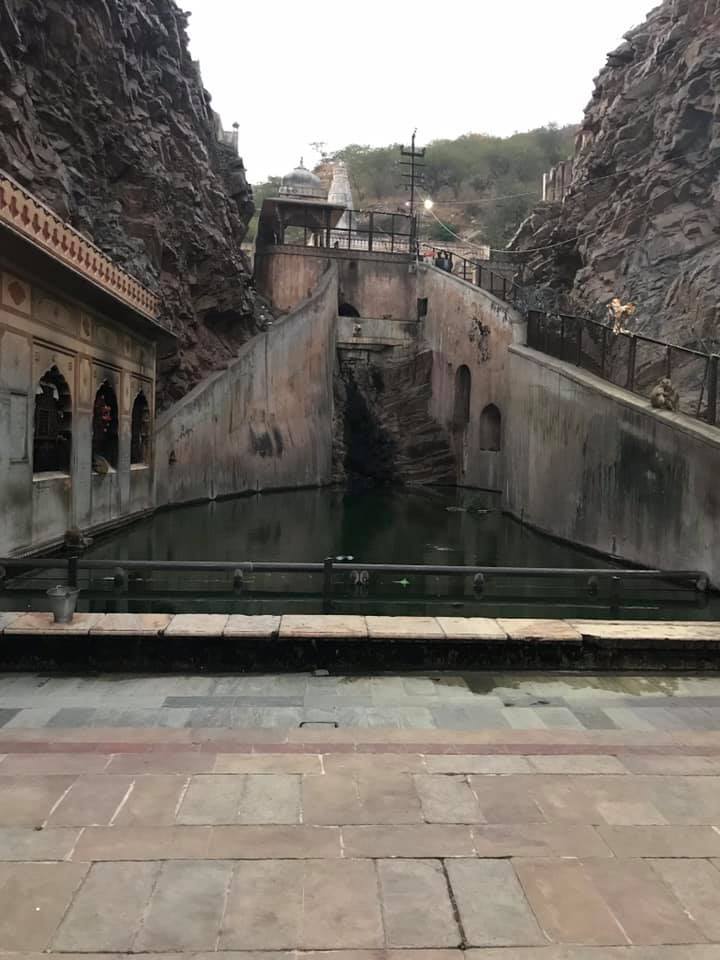
There are many temples at this site with a natural spring that flows downwards from the hill top. The water from this spring fills up the surrounding water tanks which are considered very sacred.
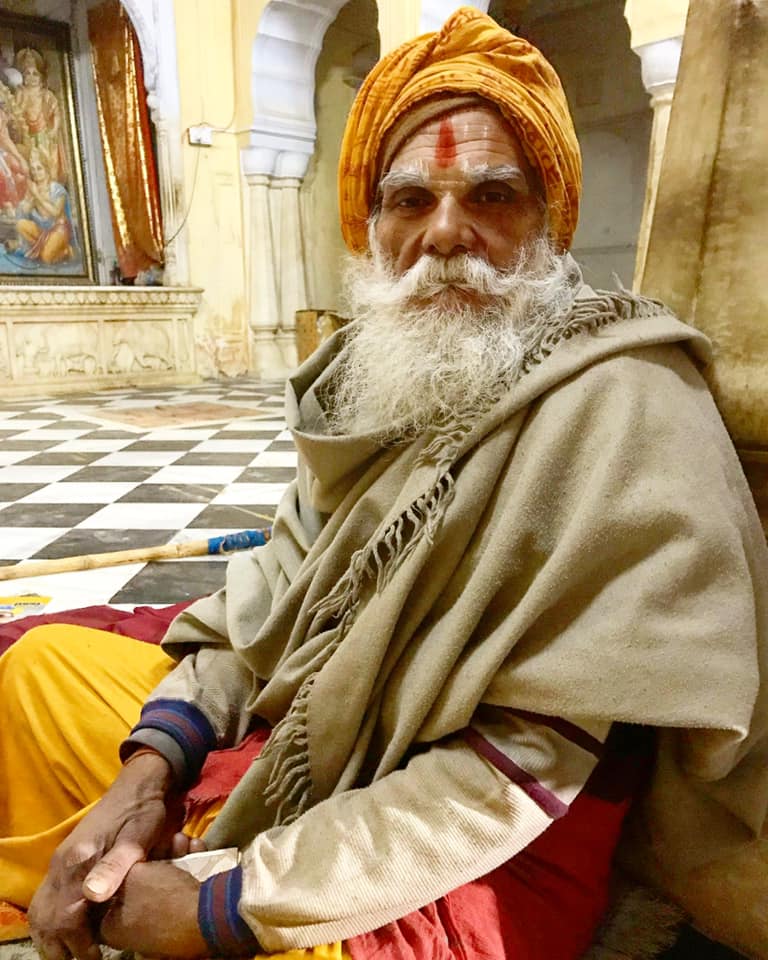
The temple has 7 holy water tanks or kunds, of which the Galta Kund is the most significant of all. Pilgrims from all over India visit the temple to bathe in this water. The temple is also overrun with curious monkeys!
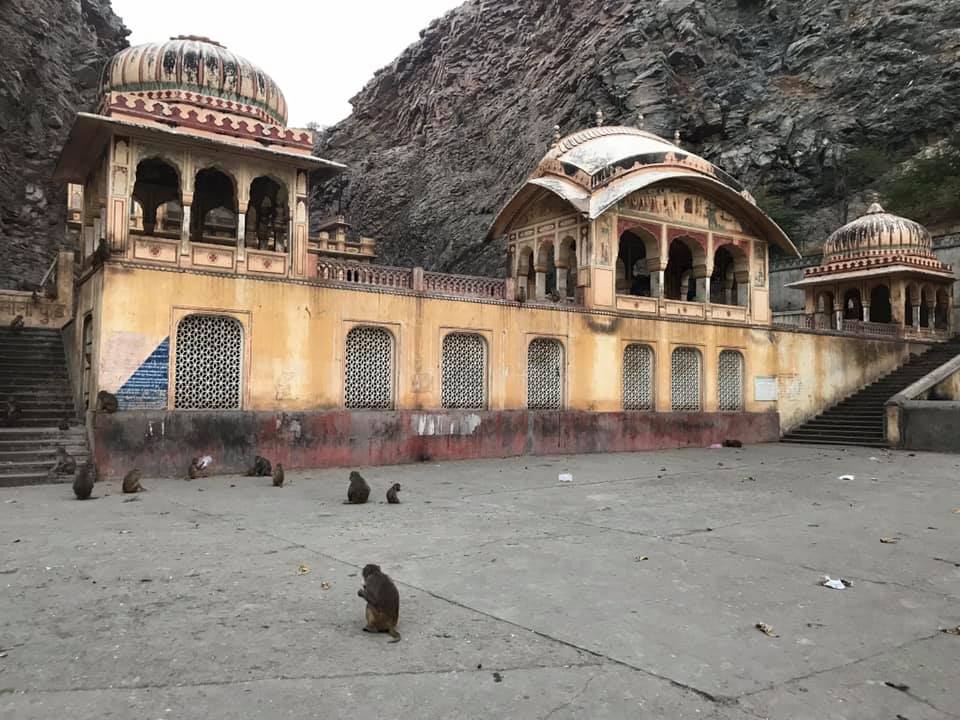
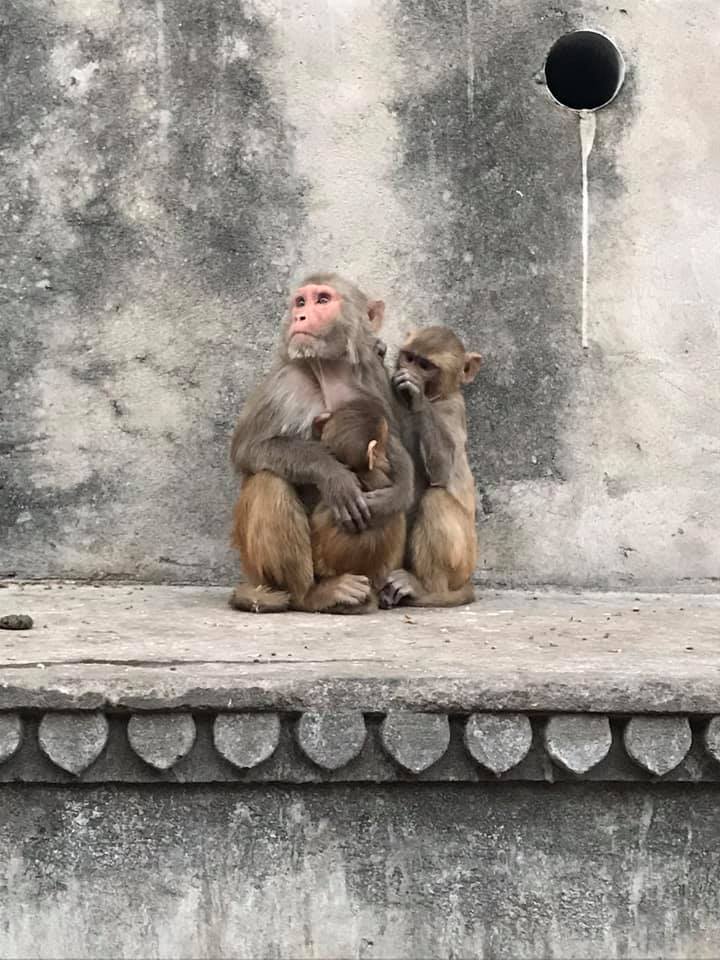
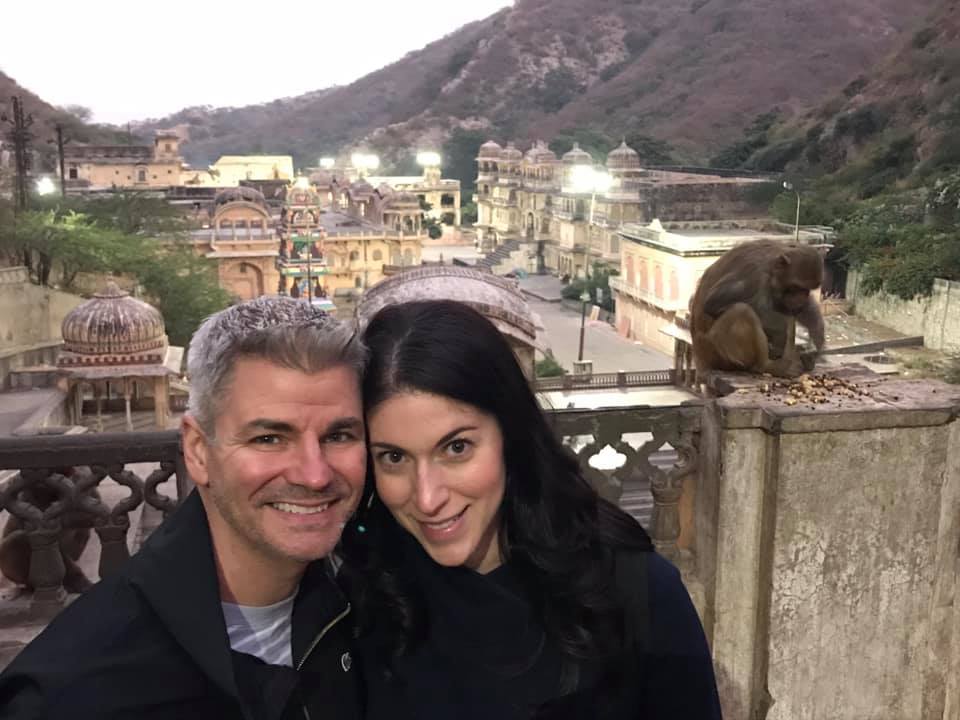

Shopper’s Paradise
If you like to shop, come to Jaipur. Whatever it is you are looking for, you can find here. Especially if textiles and jewelry is on your list. In fact, you can have things handmade just for you and delivered to your hotel by end of day. I had a custom made silk table cloth made and delivered to my hotel in an afternoon from Heritage Textiles. I’d say reserve an entire day to just shop.
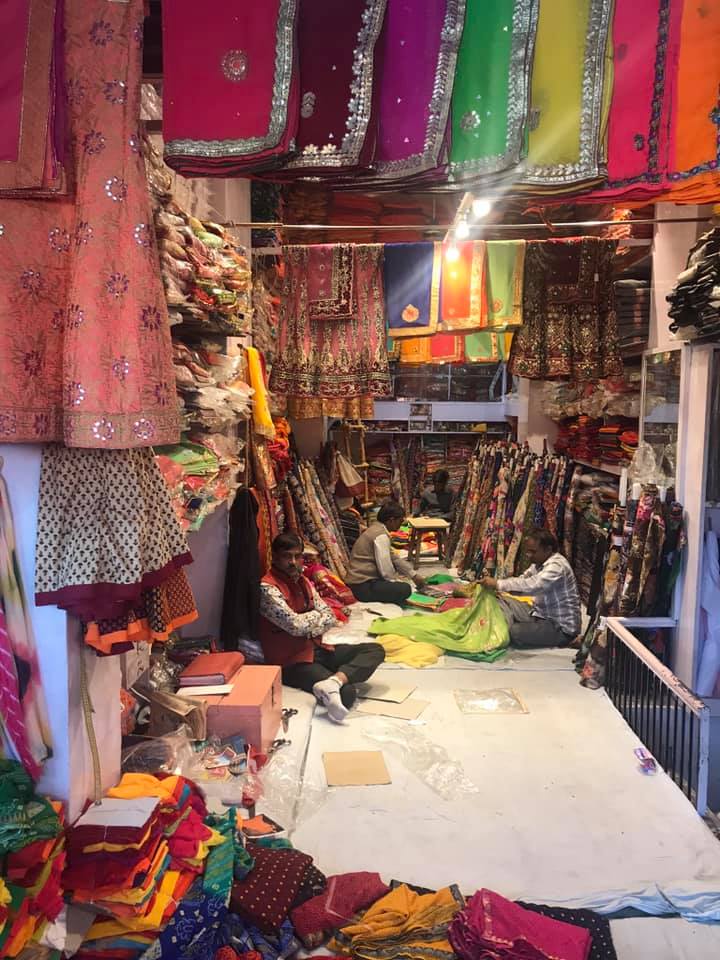
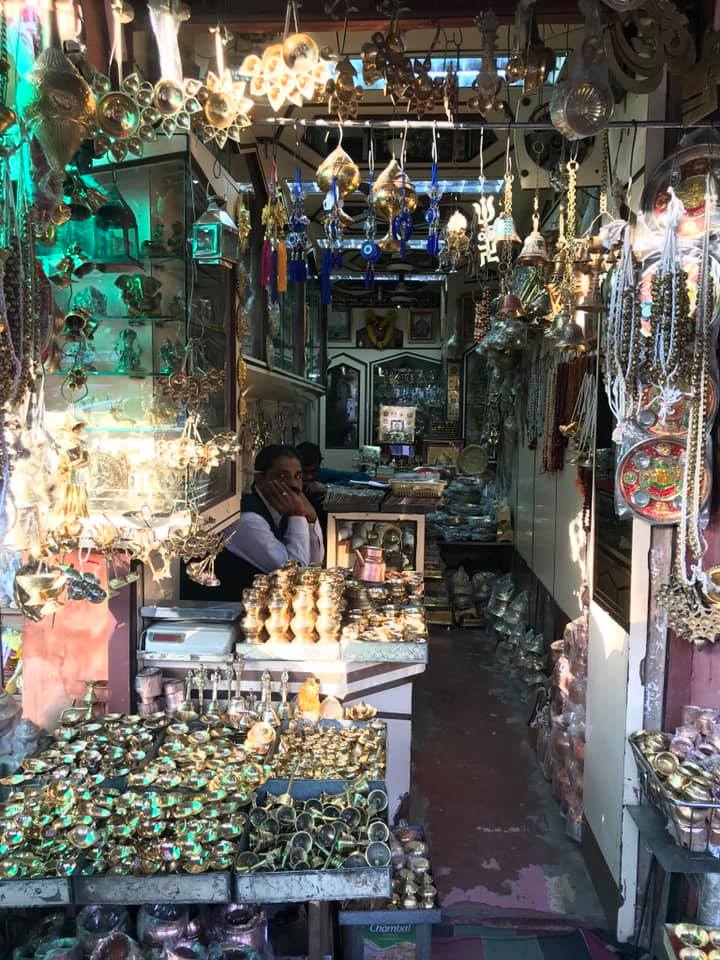
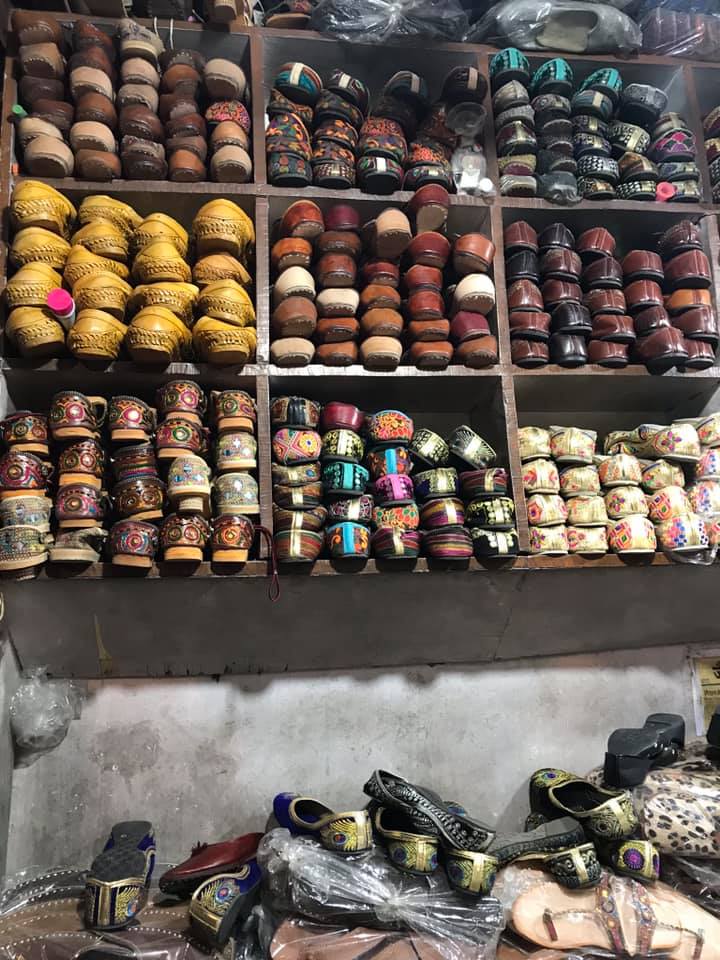
If bazaars are your thing, then you are in luck. Jaipur is full of them. The main bazaar is Bapu Bazaar. Here you can buy inexpensive textiles, clothes, juttis (the traditional Indian slip on), shawls, saris, and accessories. Johari Bazaar is famous for jewelry. In Tripolia Bazaar, Maniharon ka Rasta is the home of lacquer bangles. Here you can also find metal crafts and vintage pieces. Nehru Bazaar is where to go for traditional footwear.
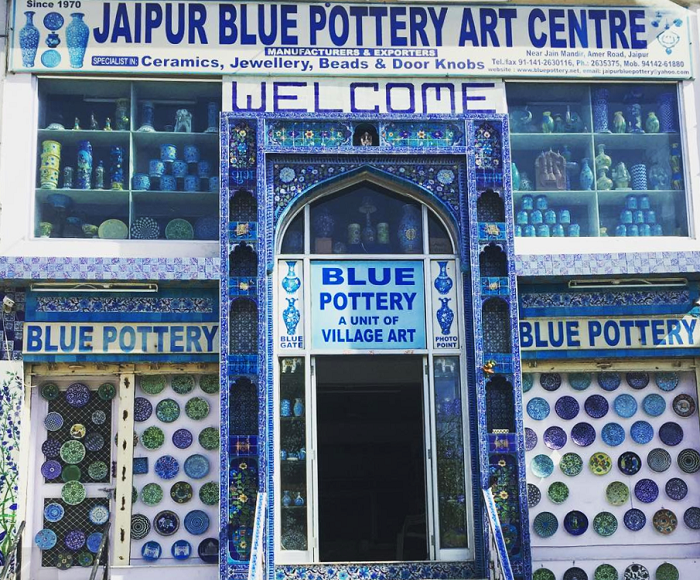
If it is the famous blue pottery that you are after, visit the Jaipur Blue Pottery Art Center.
If you are vising temples or just love flowers, stop by the flower market. This early morning market starts at 6:00 a.m. and is held inside the Old City’s Chandi ki Taksal Gate. You will find sacks of bright marigolds and roses. and as decorations for weddings. Combine your visit with the neighboring fruit and vegetable market as well. If it’s a Saturday, the Hatwara flea market pops up there too and is delightfully free of tourists
Stay and Dine
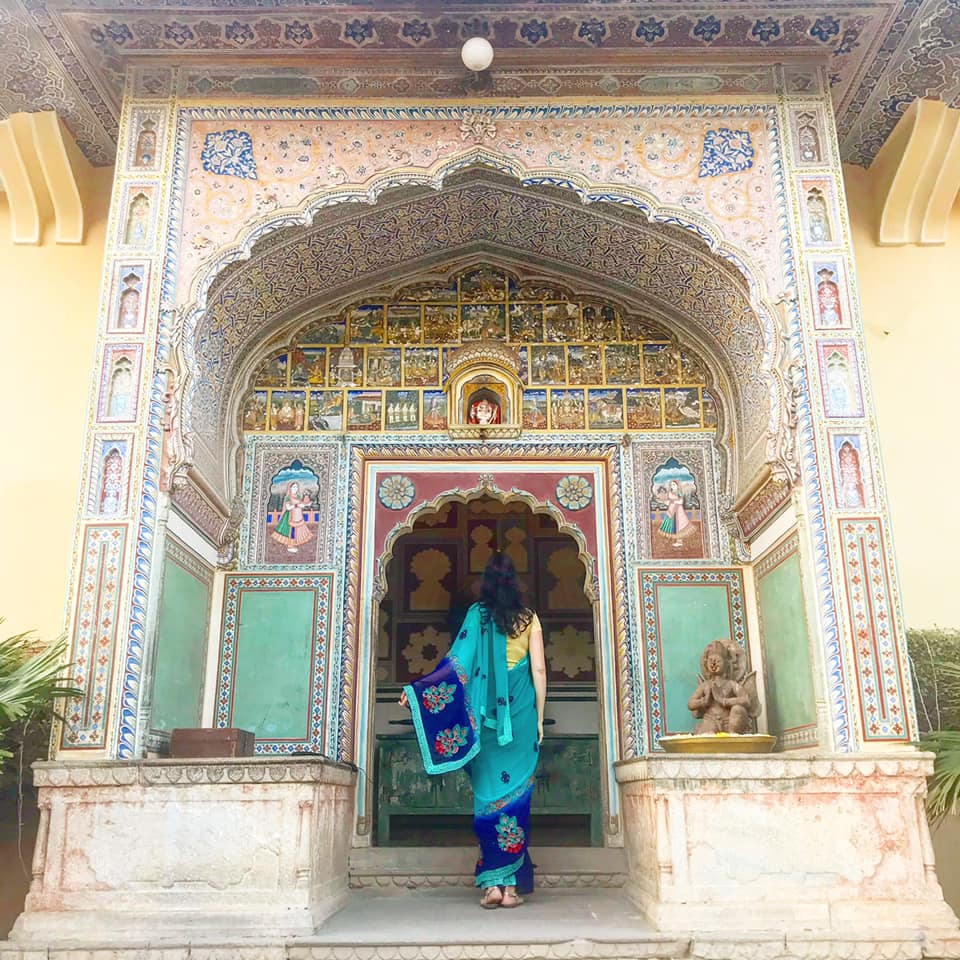
Jaipur is a huge city so the options for accommodations are plenty, from budget to luxury. But, I think it is a nice unique experience to book a palace Hotel or a heritage hotel. I mean, who doesn’t want to stay in a palace? So that is what we did. We chose a suite at the beautiful Samode Haveli. The grounds are immaculate and beautiful. The common areas are truly spectacular. And, breakfast was fantastic!
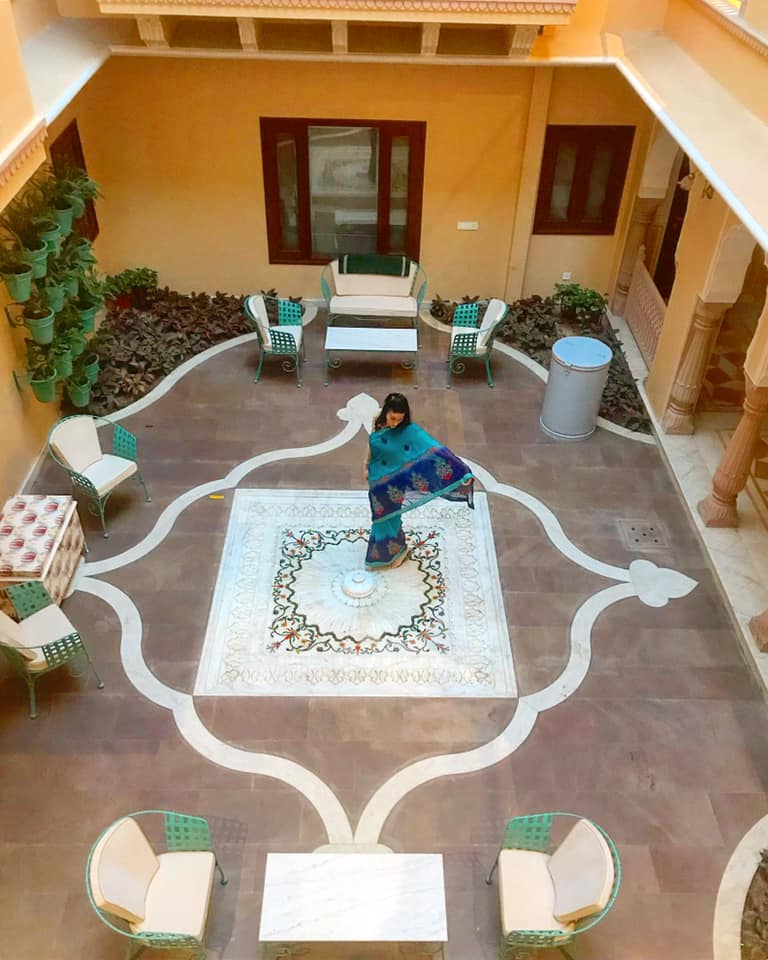

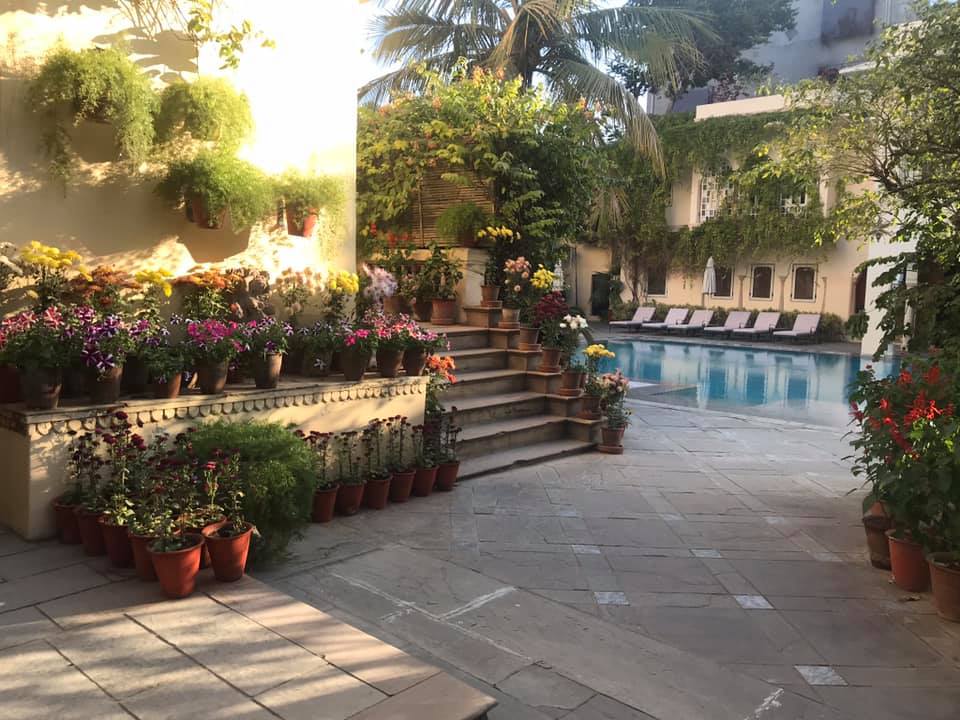
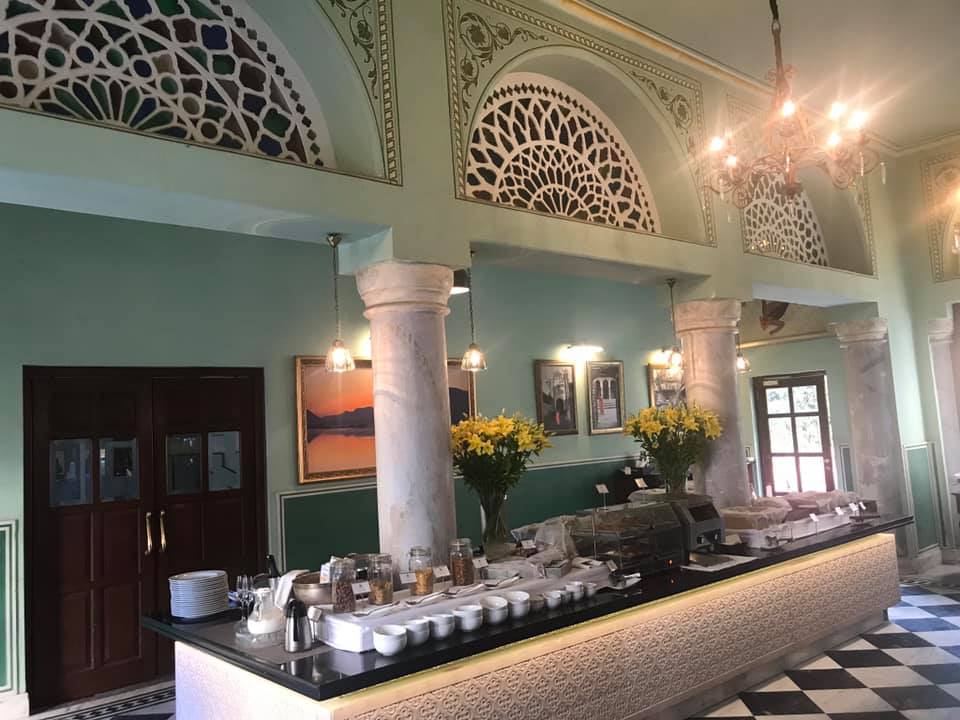
Another cool experience we had in Jaipur was a cooking class. We prepared and ate a beautiful meal with a lovely Indian family. Also, while in India, you must try Indian chai masala tea, and Jaipur is as good a place as any to give this sweet, spicy, creamy tea a try.
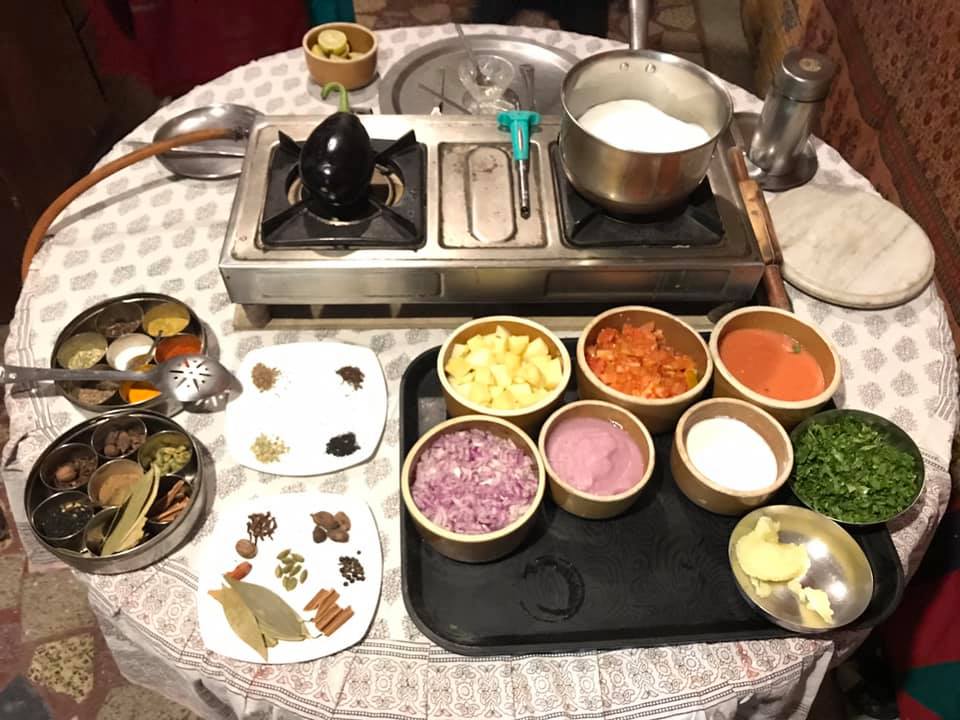
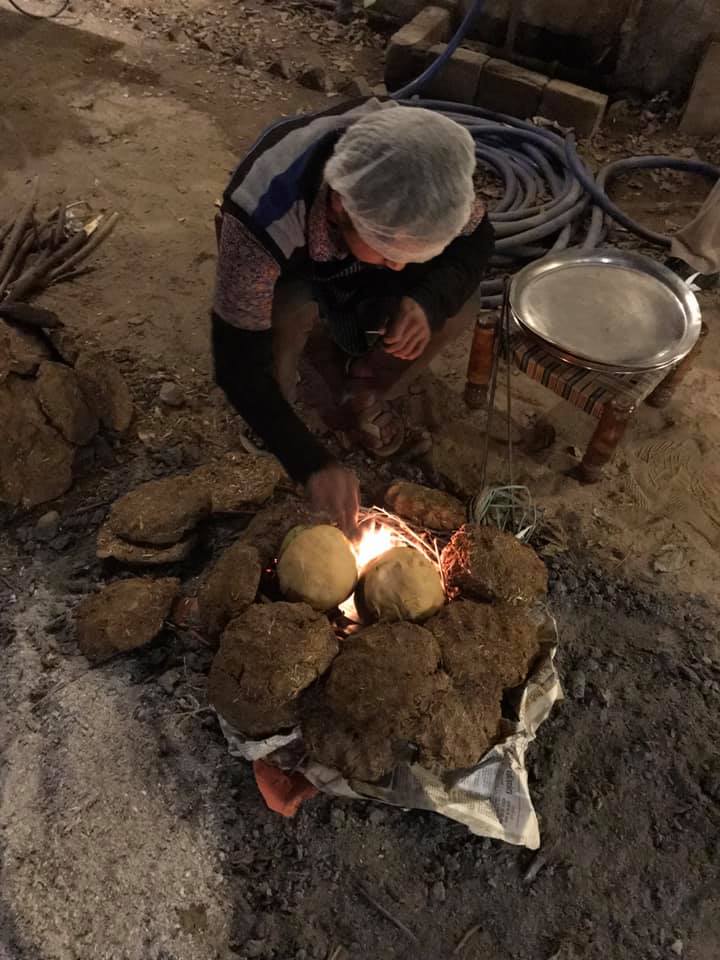
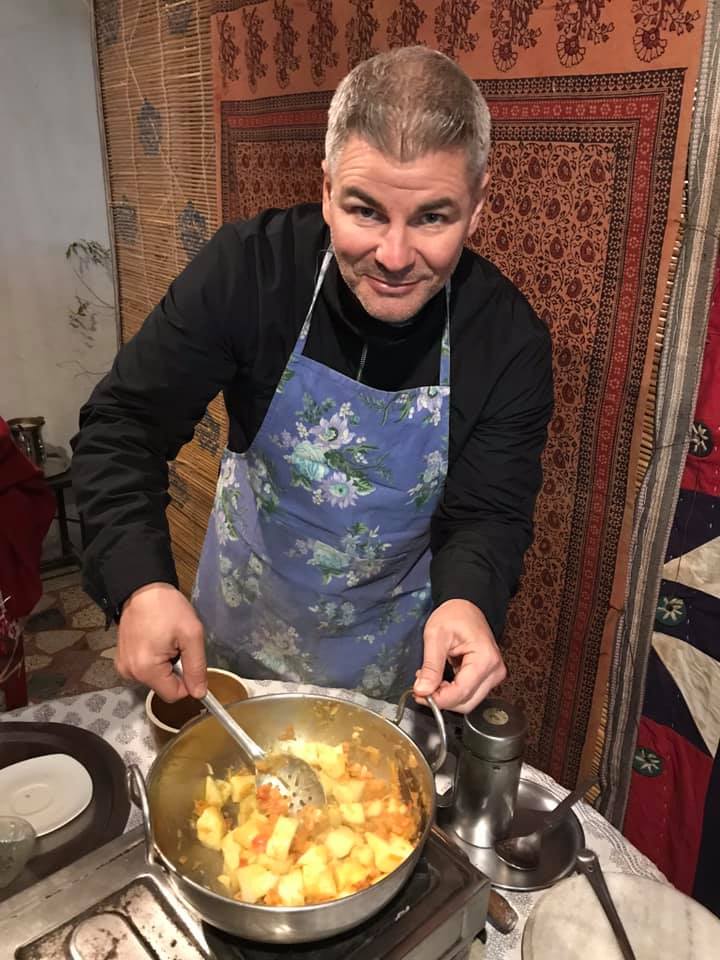
If you are brave, and Chad was, there is a street food tour that we took. It was actually pretty interesting. I stuck to the fried foods. Chad just ate everything. Neither of us got sick. The nice thing about this tour is that all the vendors that they visit are vetted, so that makes you feel a little better. However, I will say that one vendor had an interesting way of serving his samples. He had a stack of books, and he would just tear pages out of the book, drop your food sample on it, and hand it over.
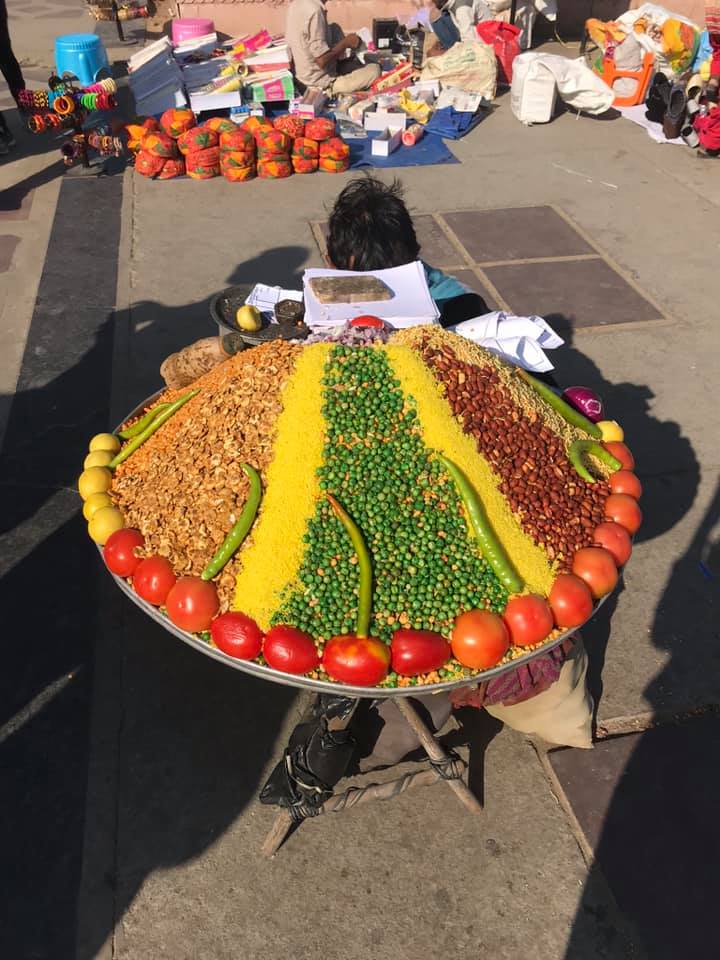
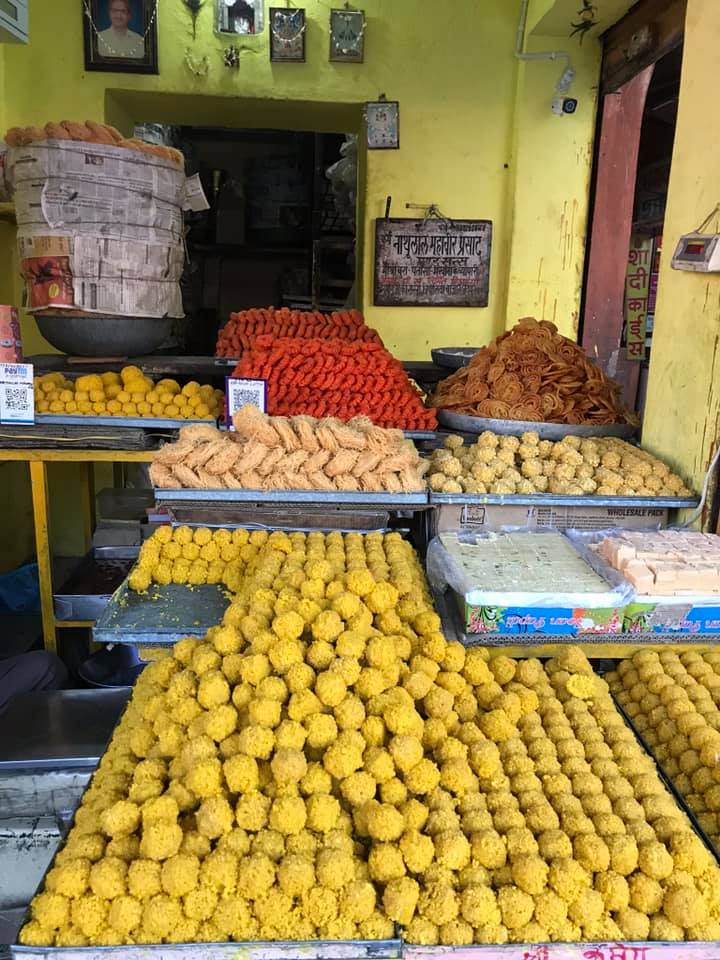
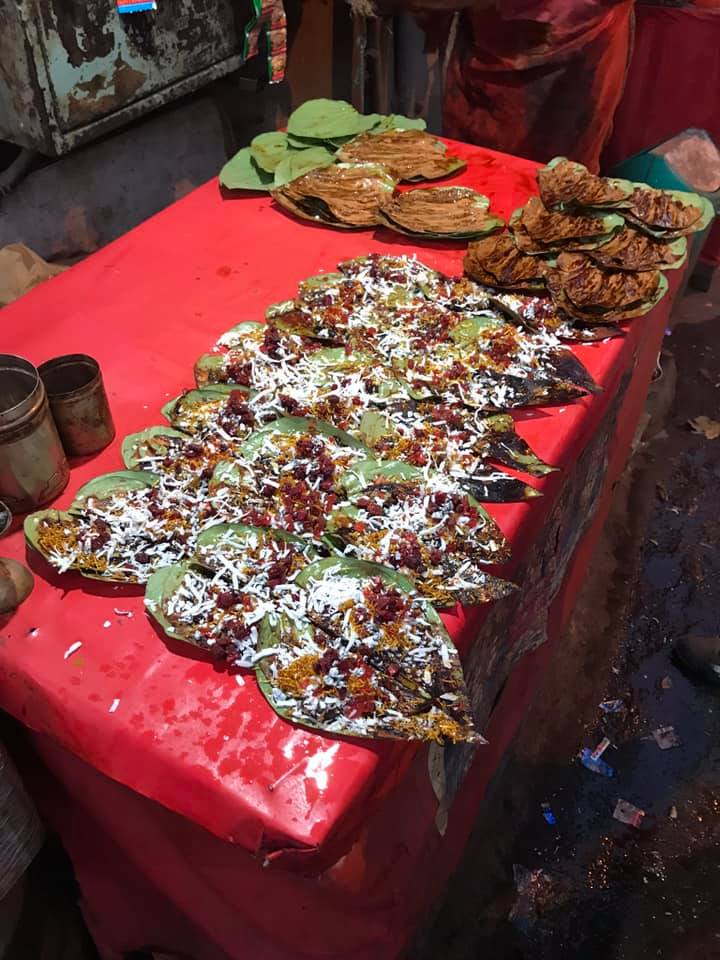
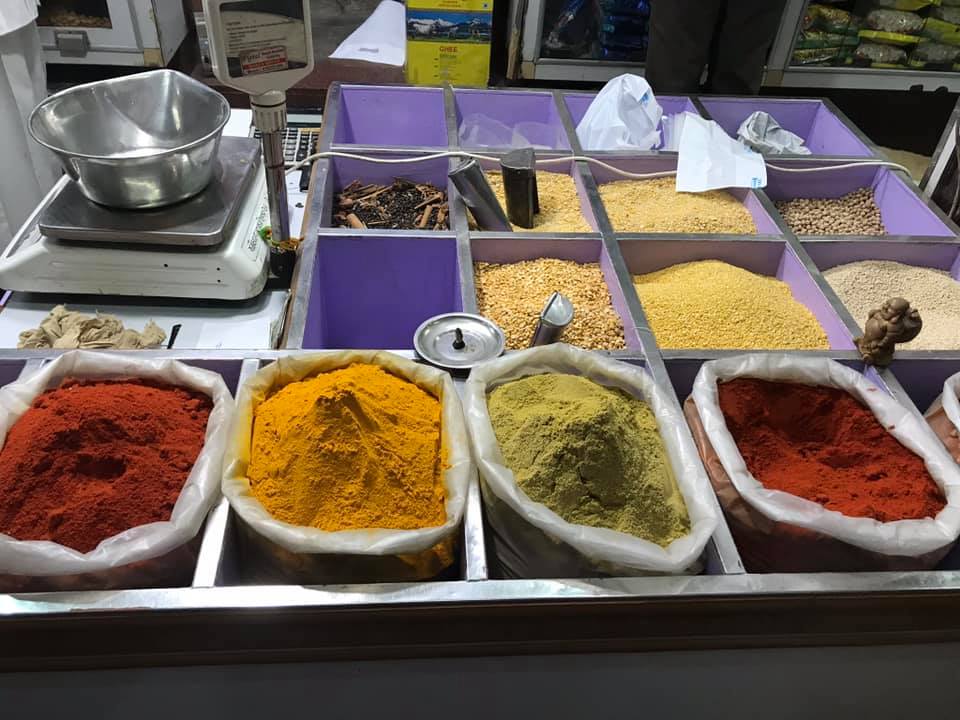
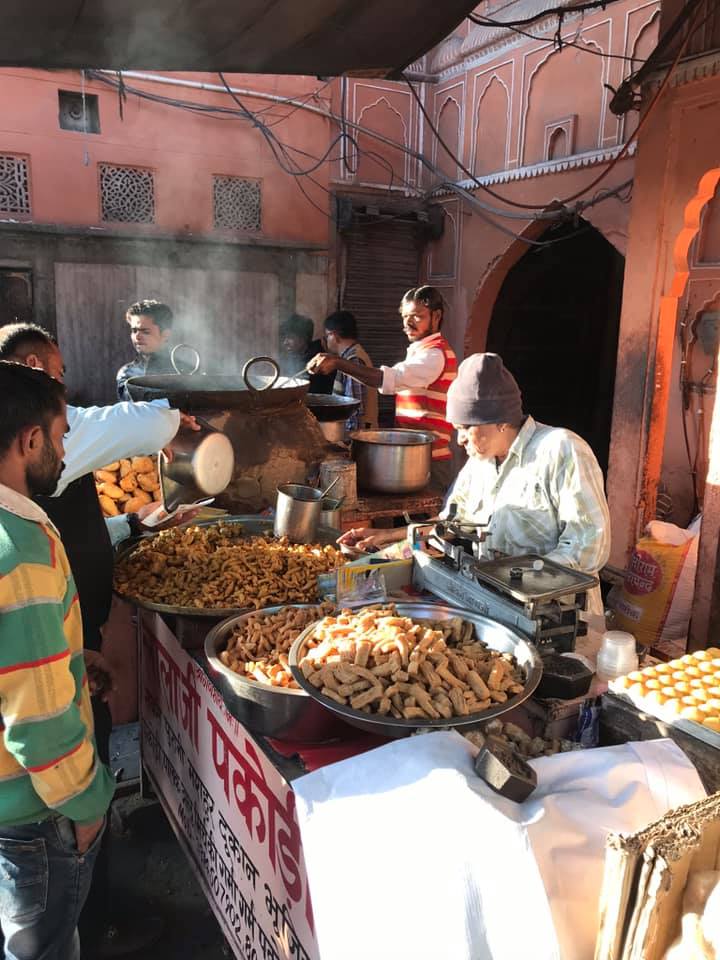
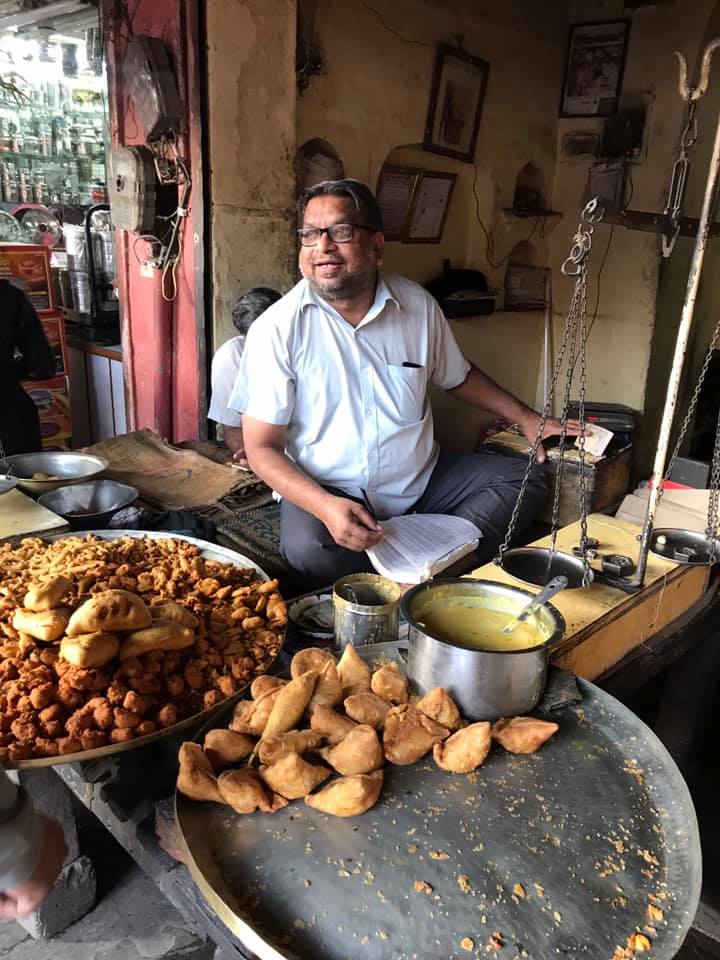
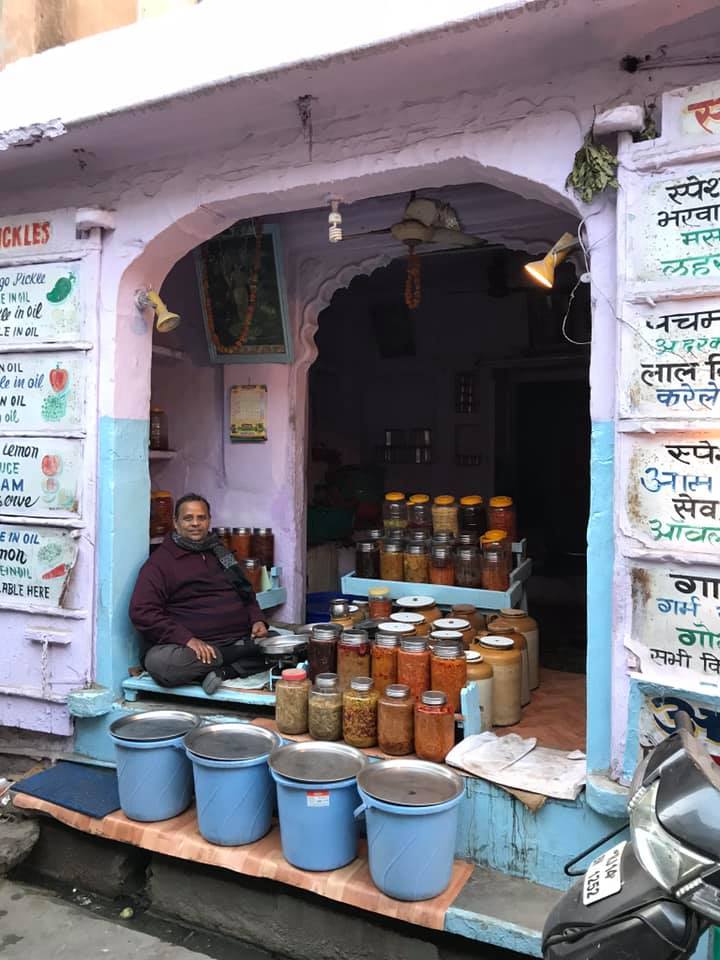
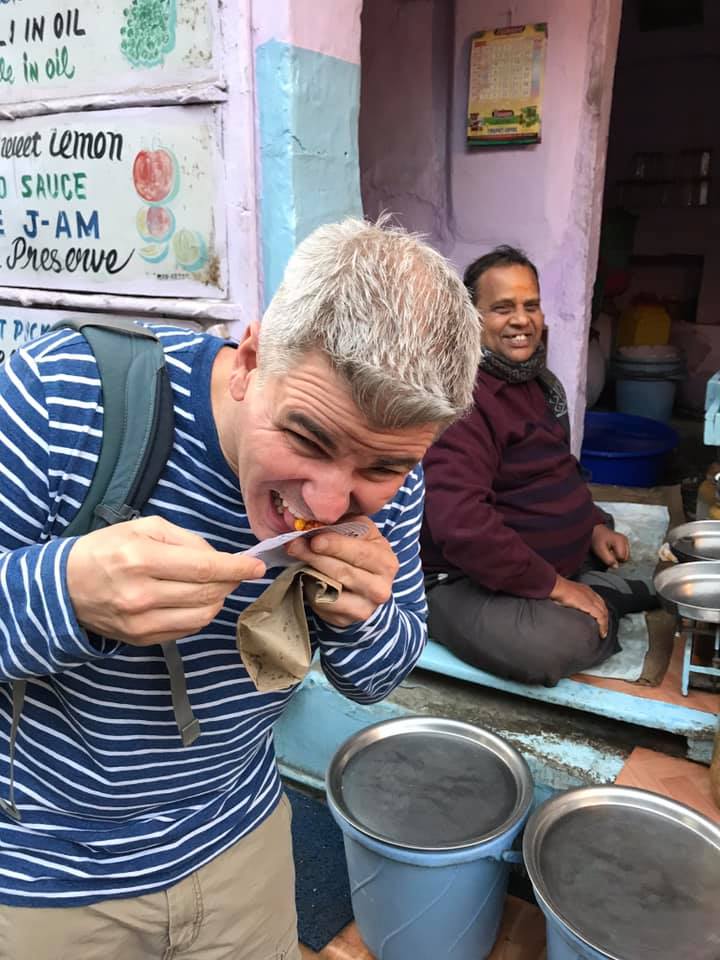
If you want to take a break from Indian cuisine, try Bar Palladio. It is Jaipur’s most photogenic bar. It serves Italian fare in a beautiful indoor/outdoor setting. The food is actually fantastic, and I had a cool rose tea there that was to die for!
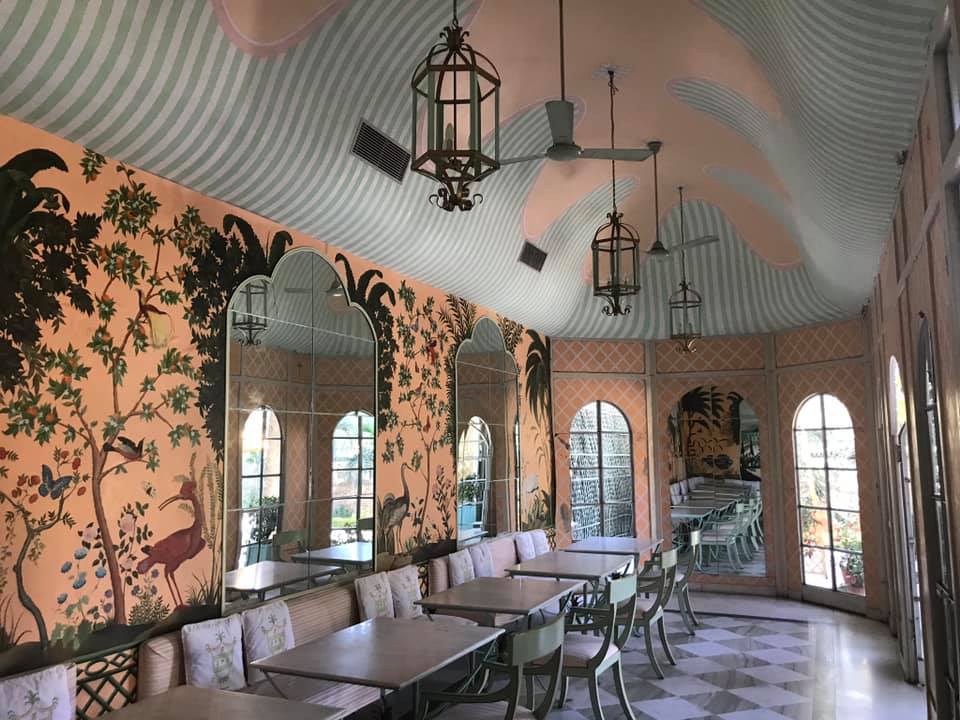
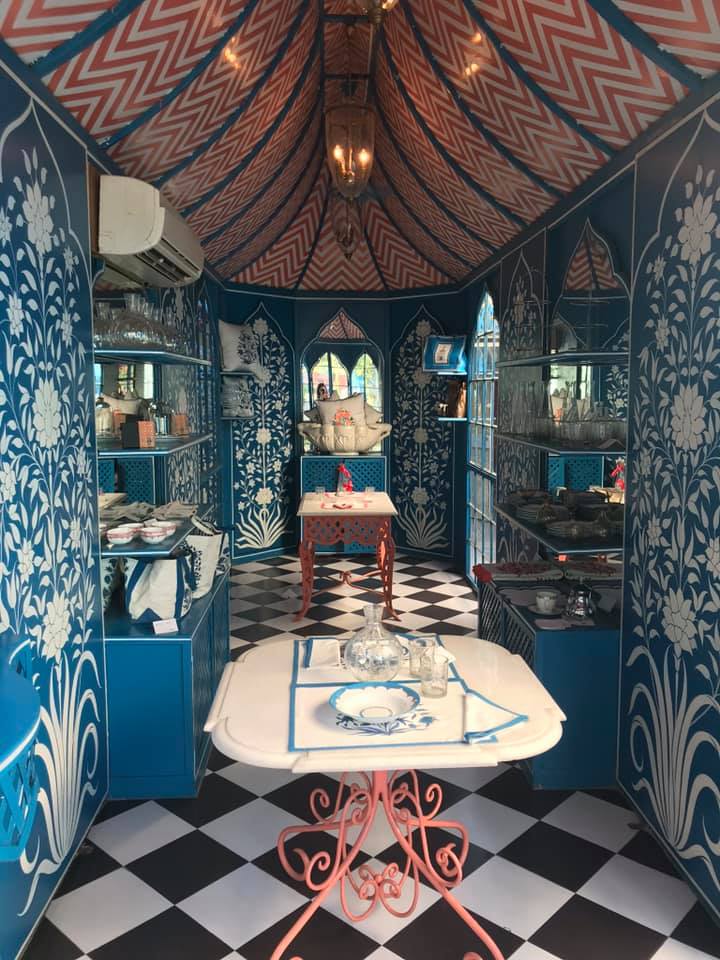
India as a whole is an assault on the senses, and Jaipur is the perfect place to dip into the culture. There are historical sites to visit, tons of things to buy, and some great little gastronomic treats as well. I don’t think any itinerary to Northern India would be complete without a stop in Jaipur!
